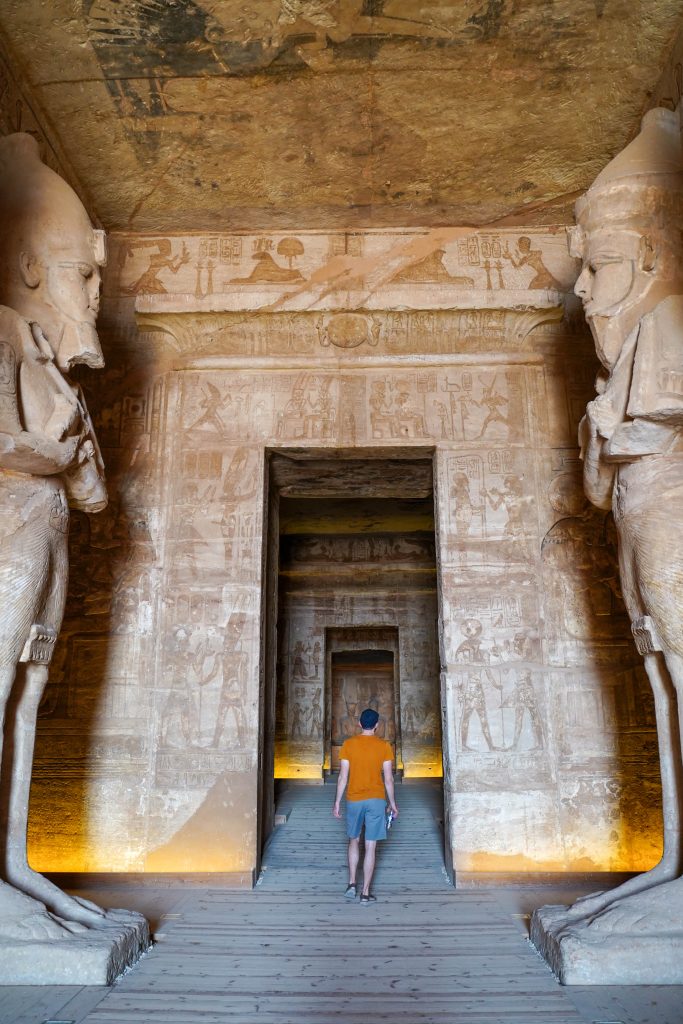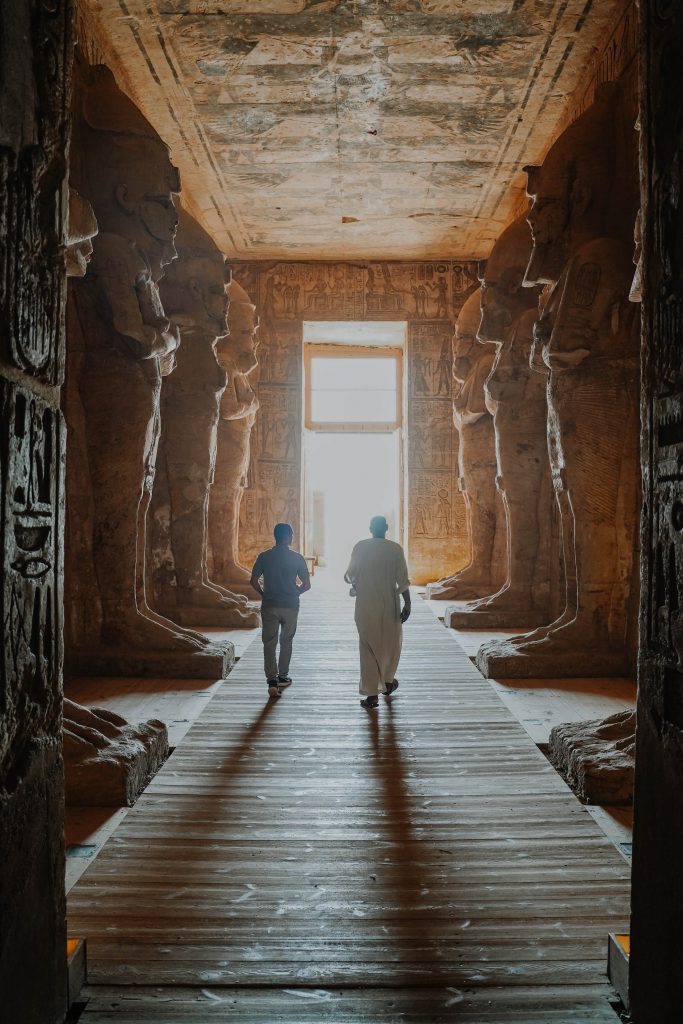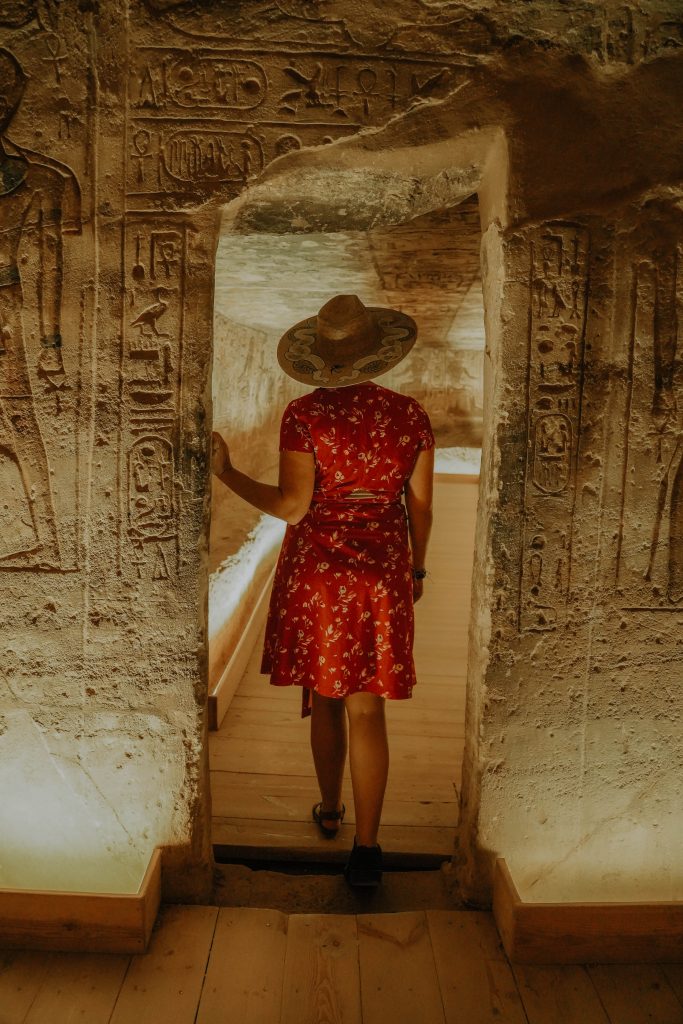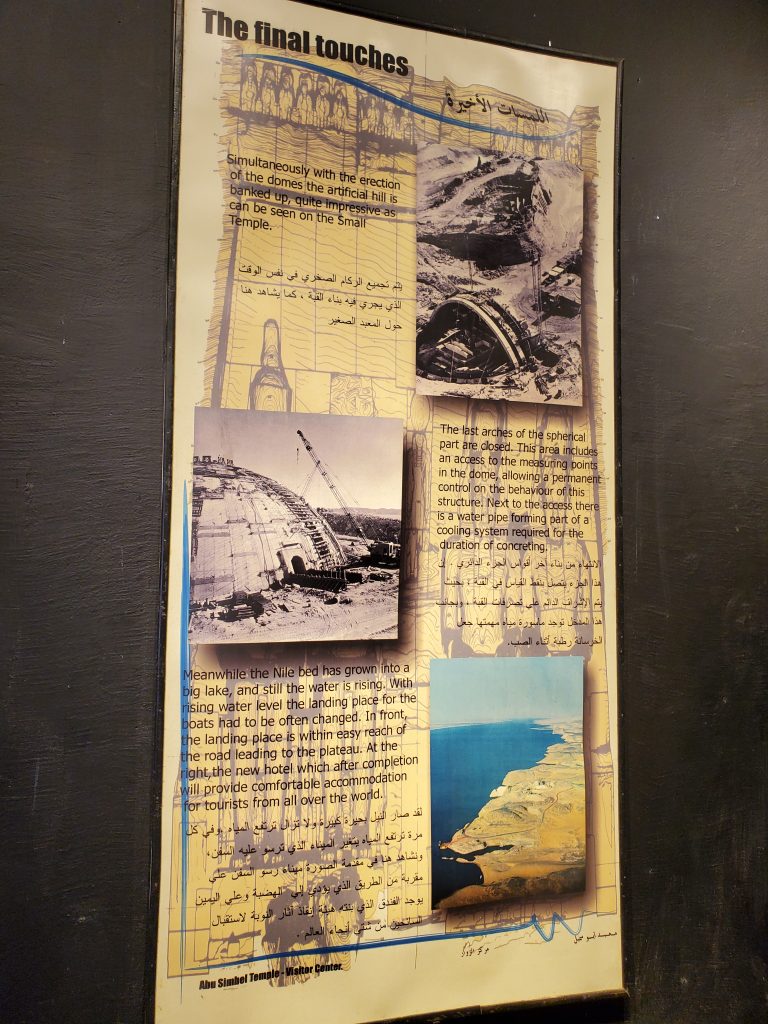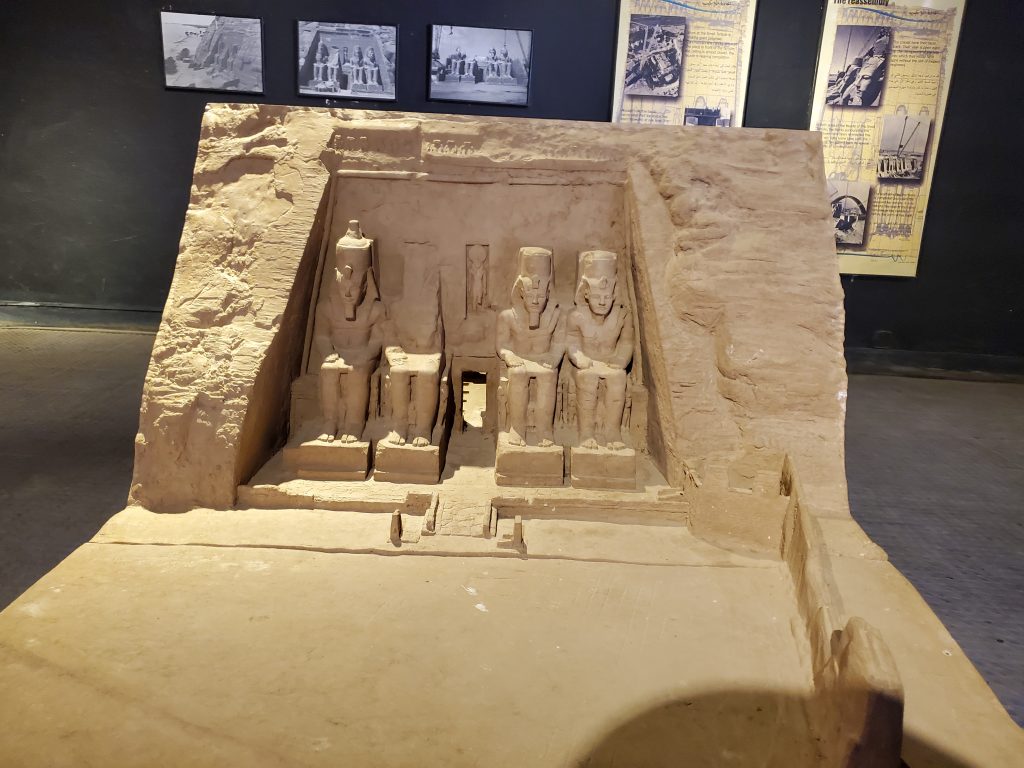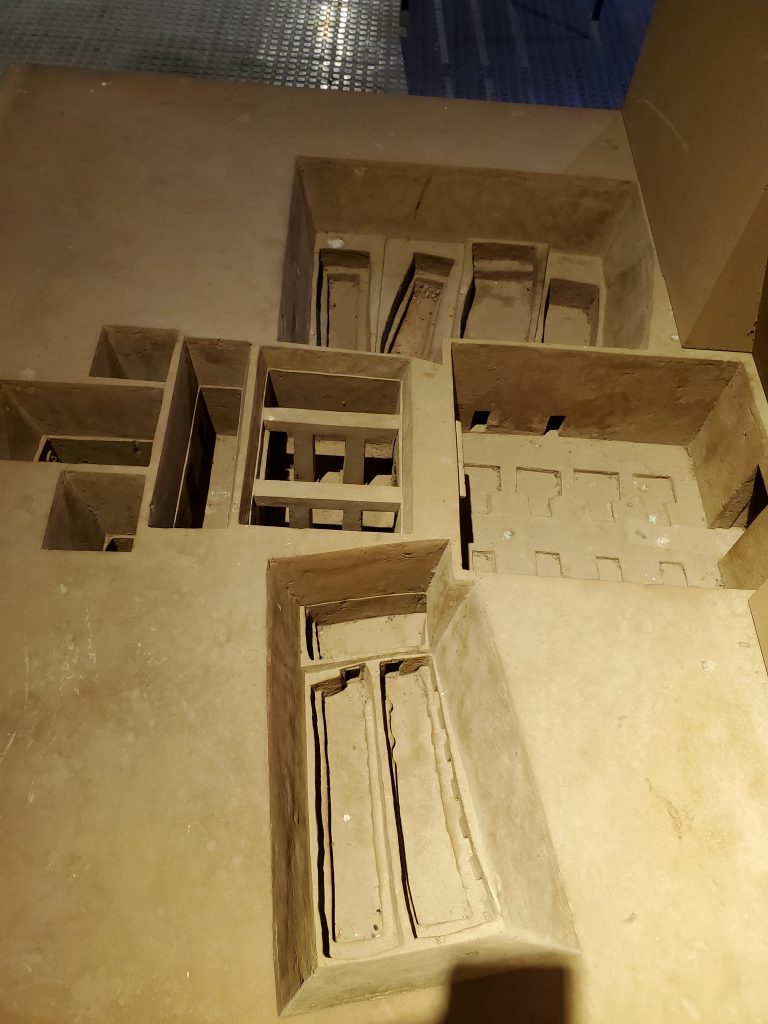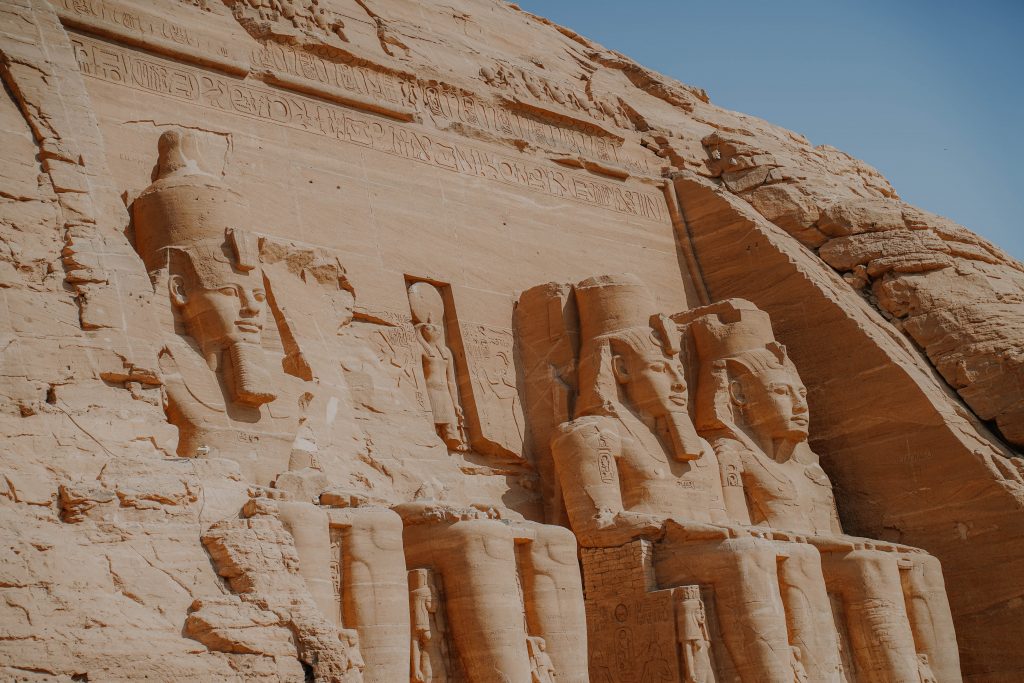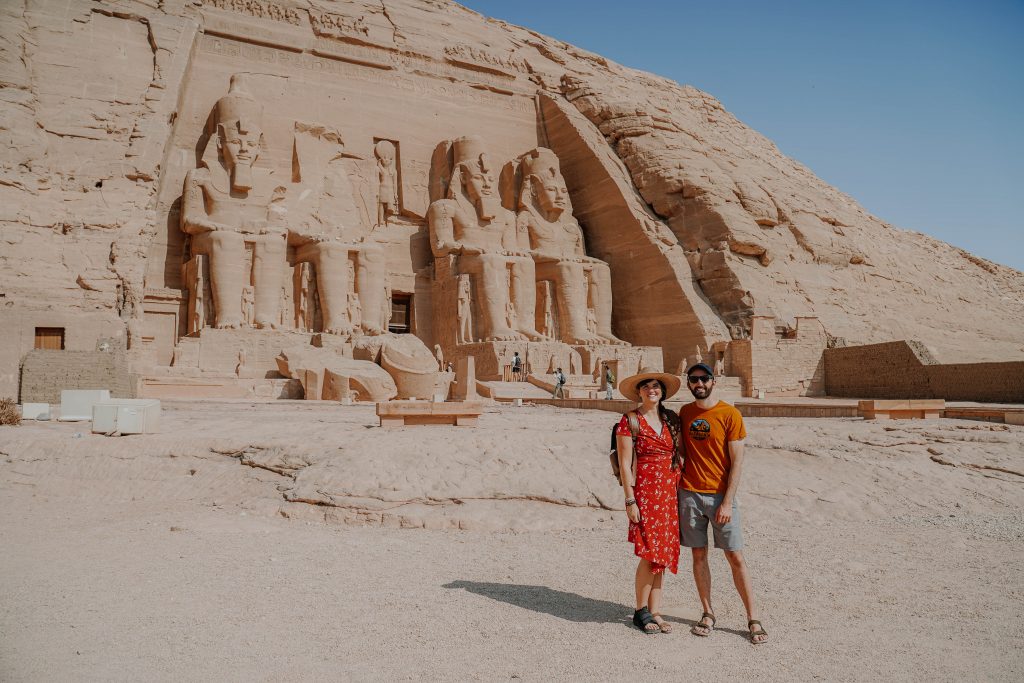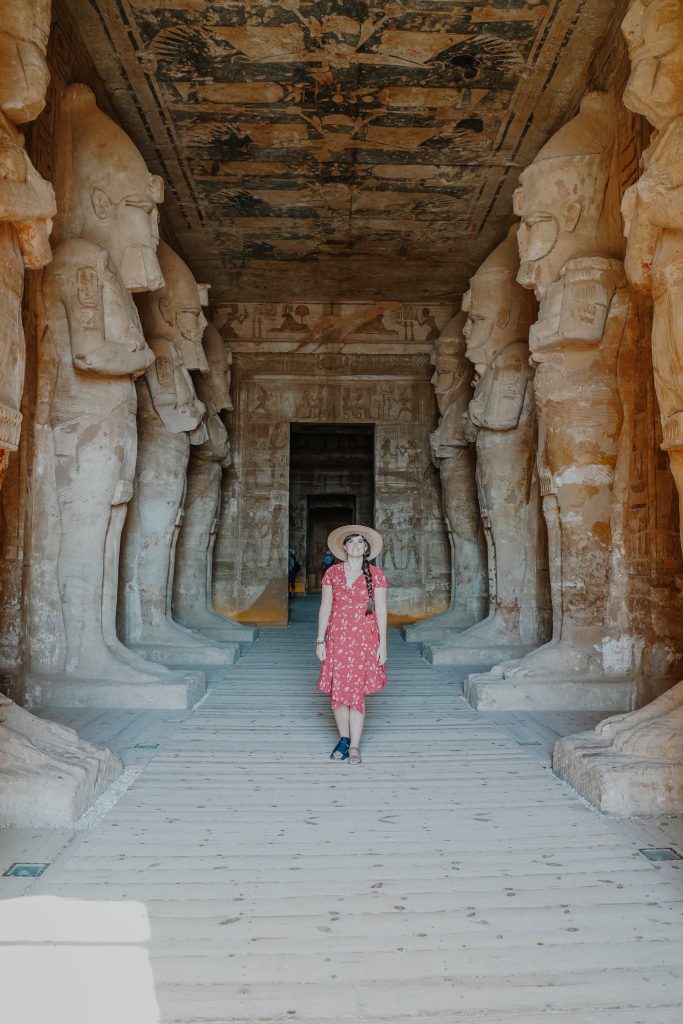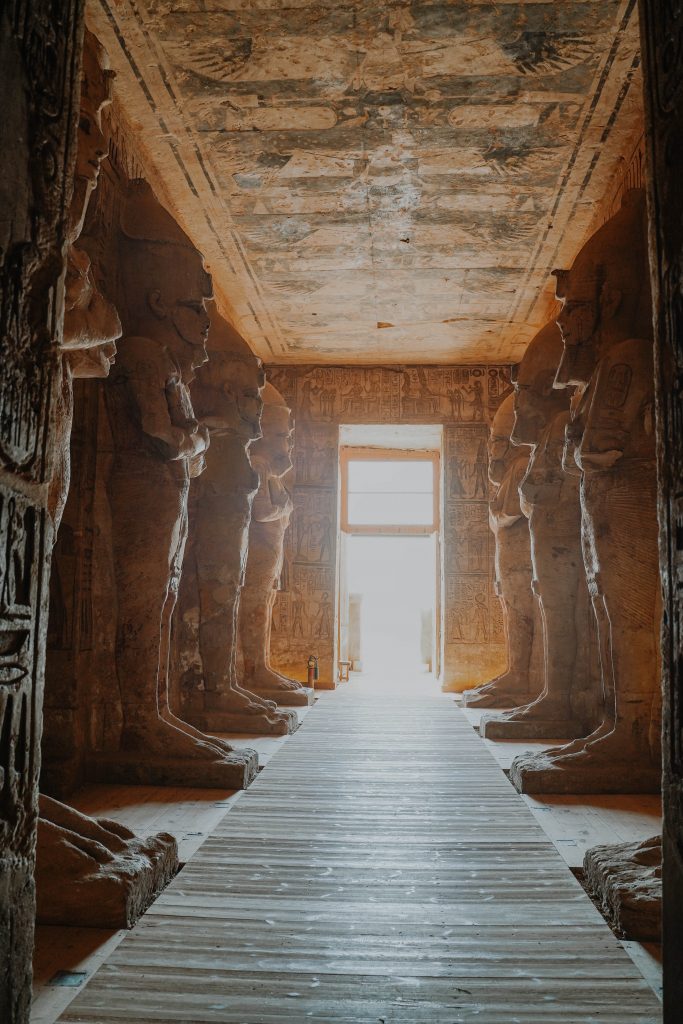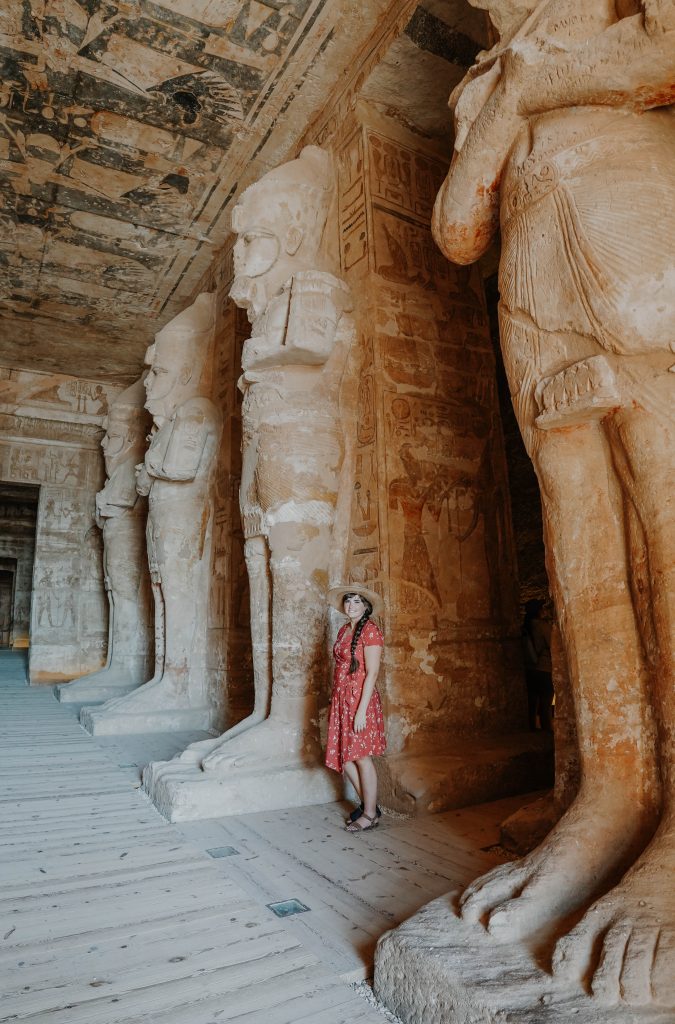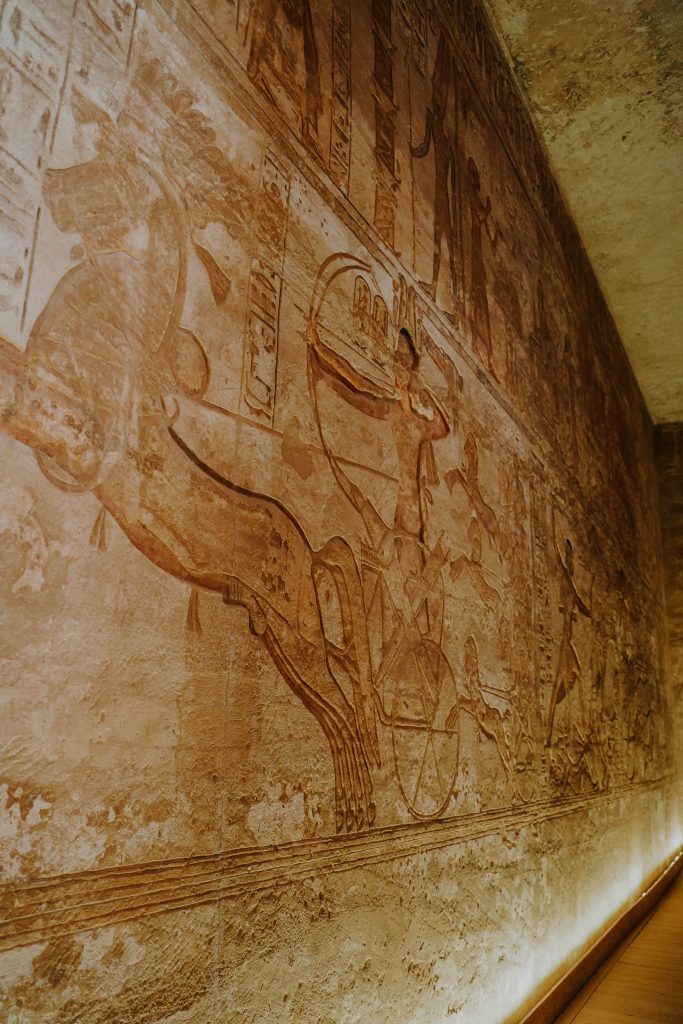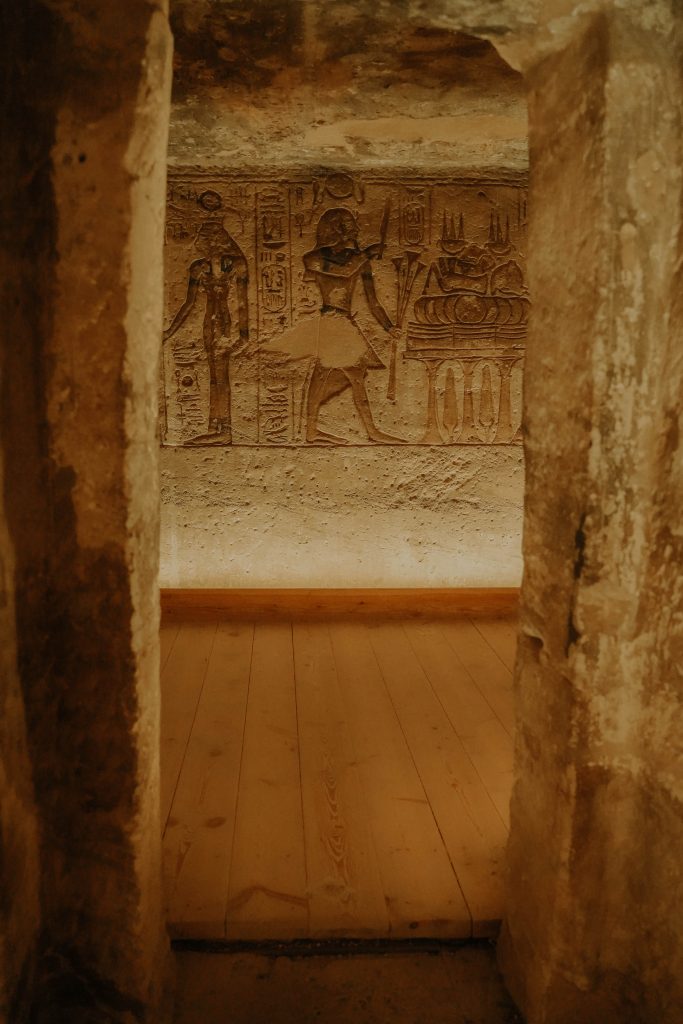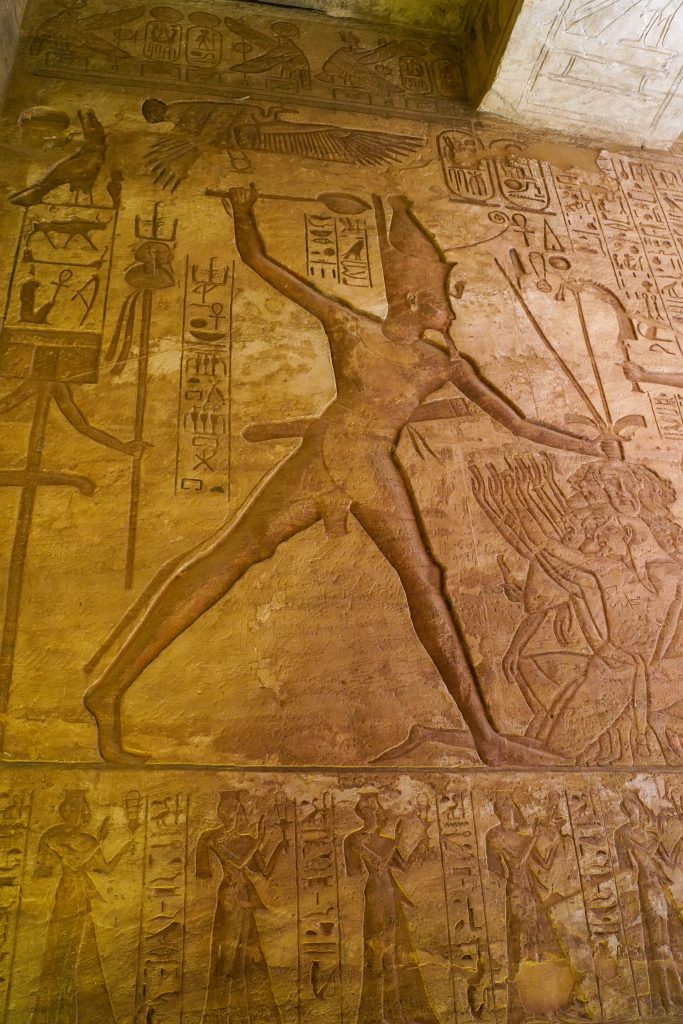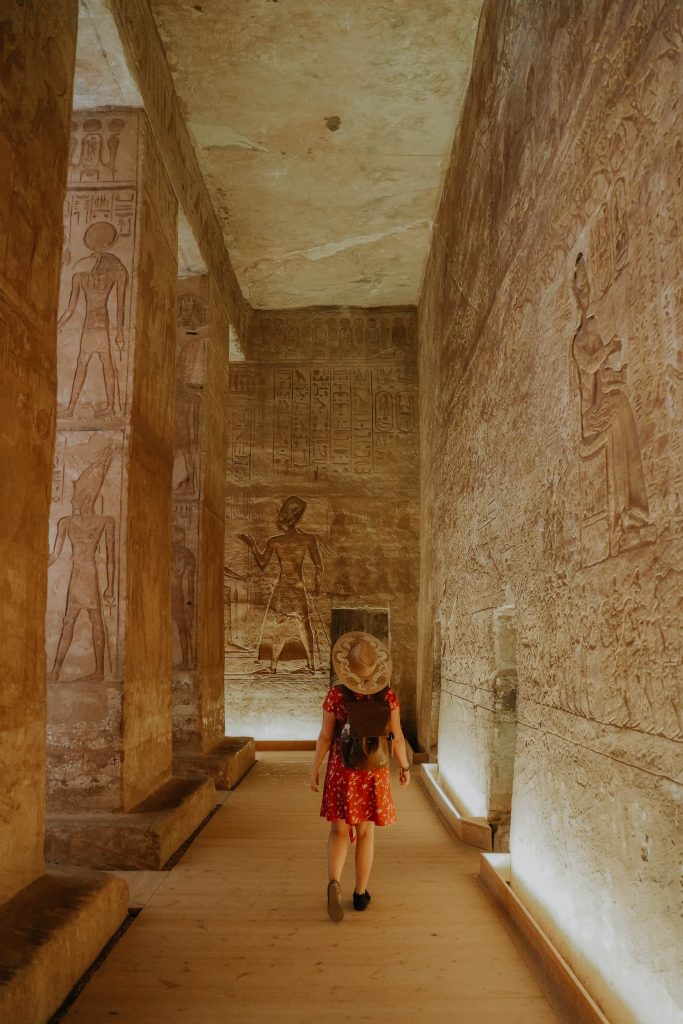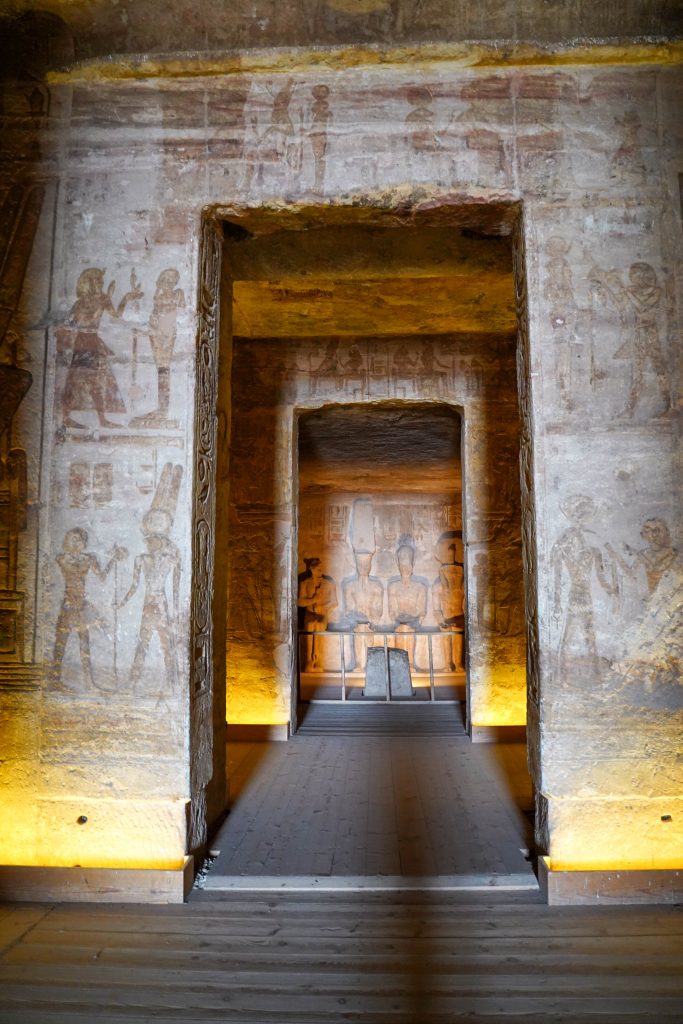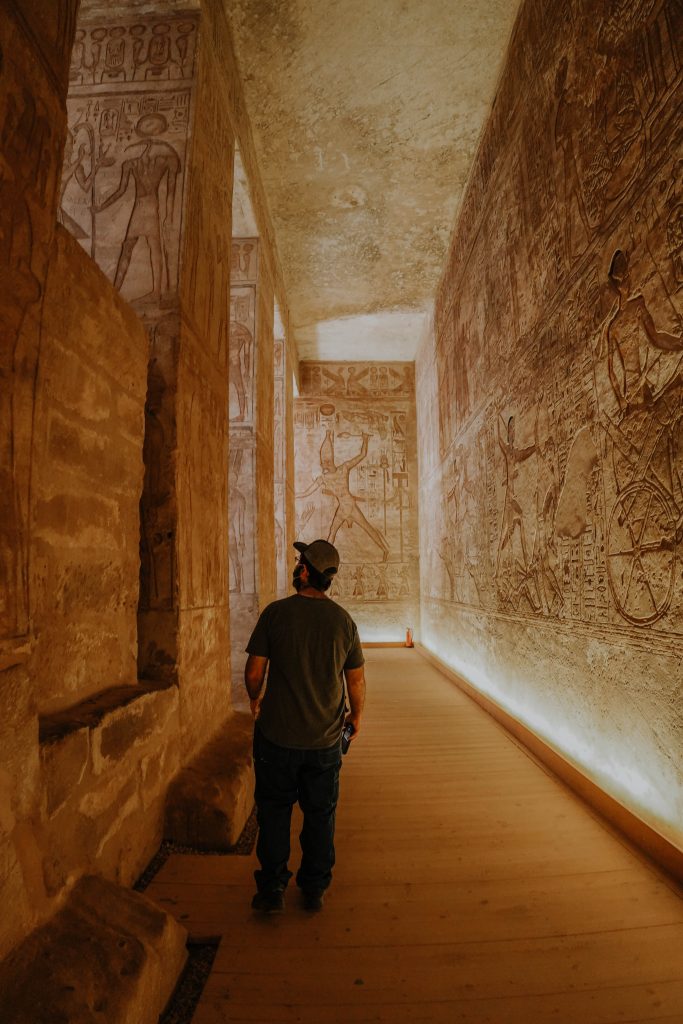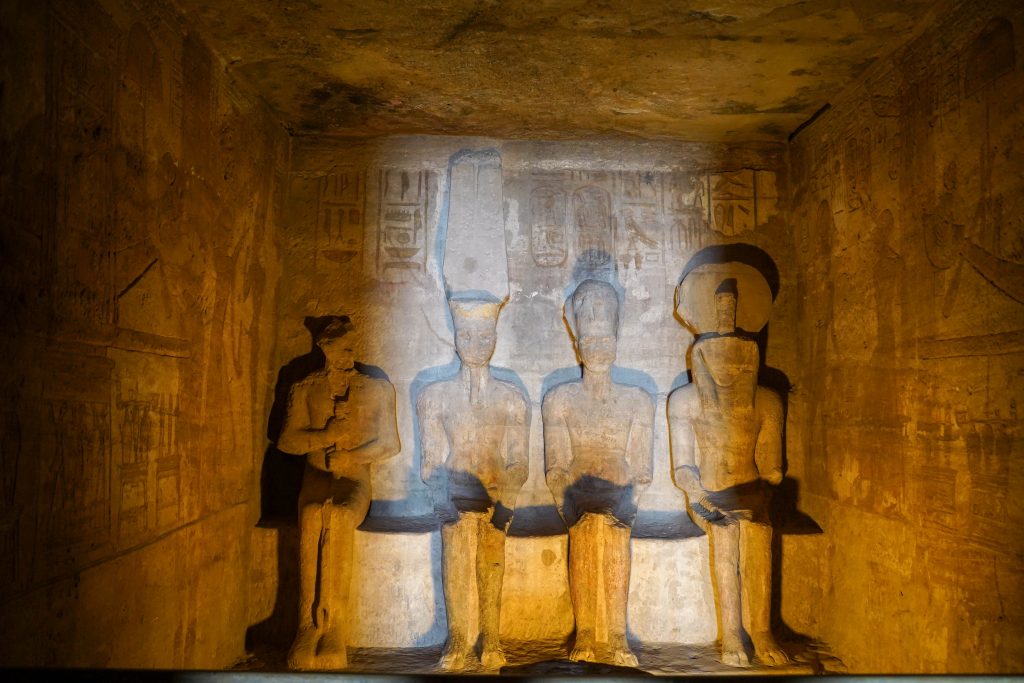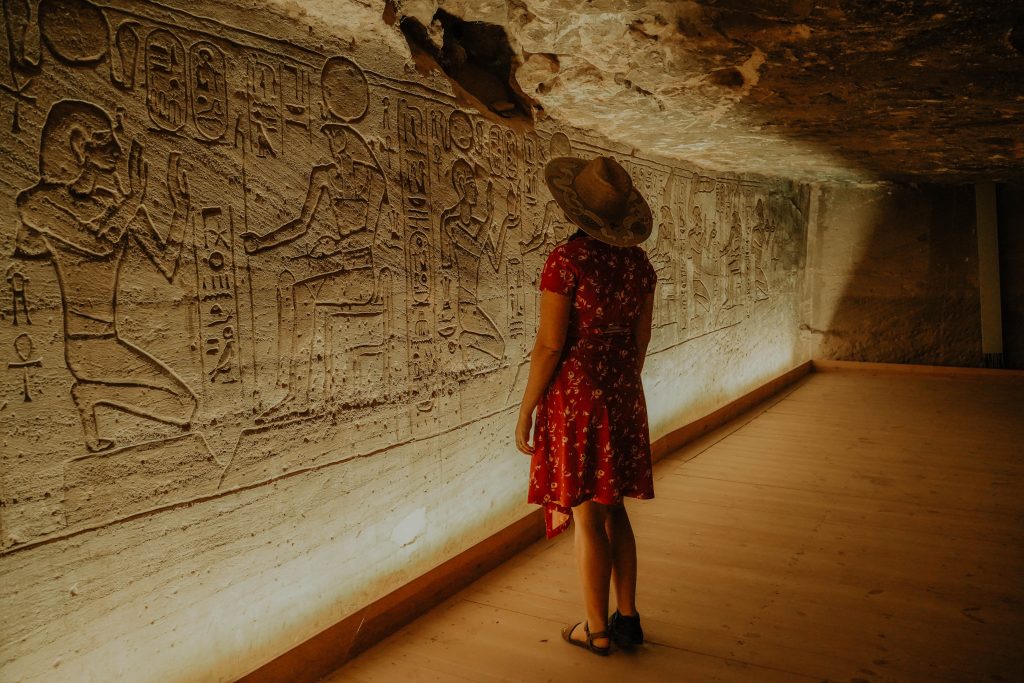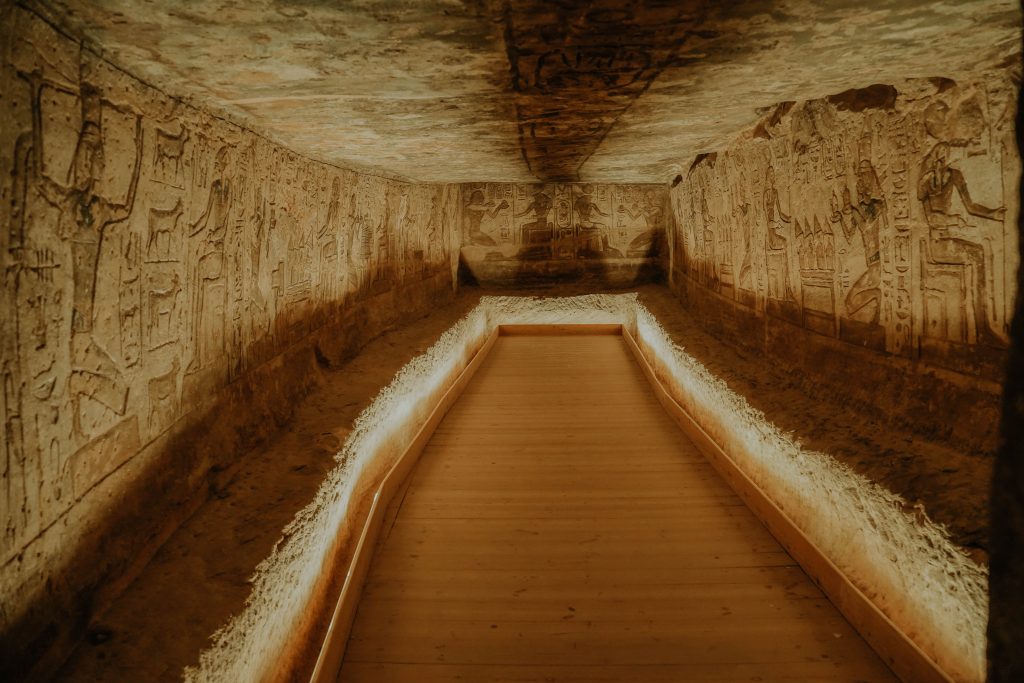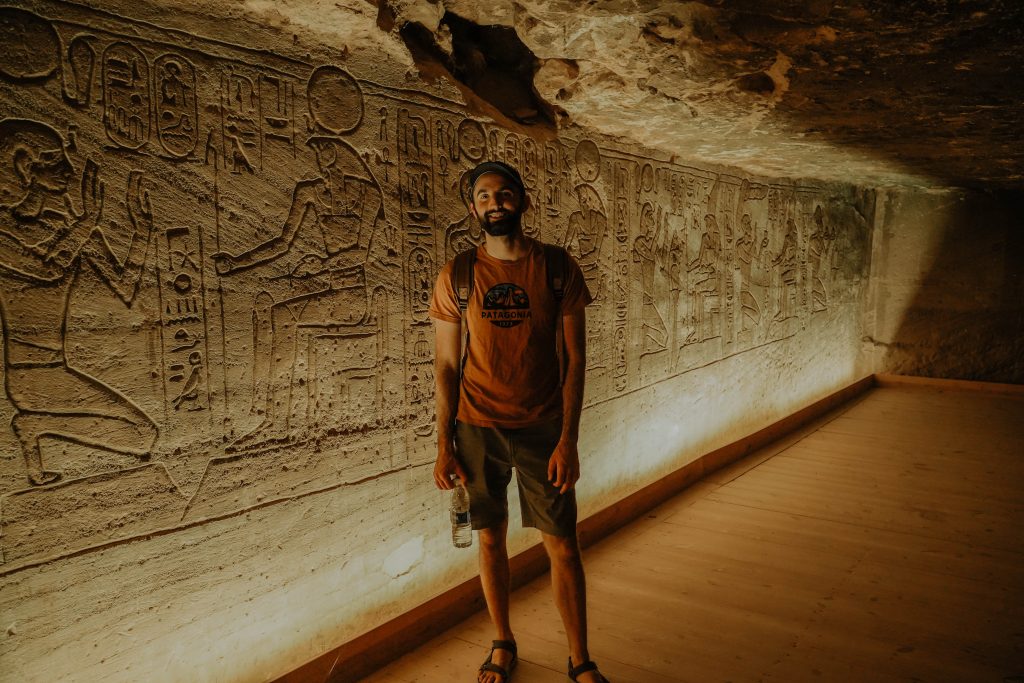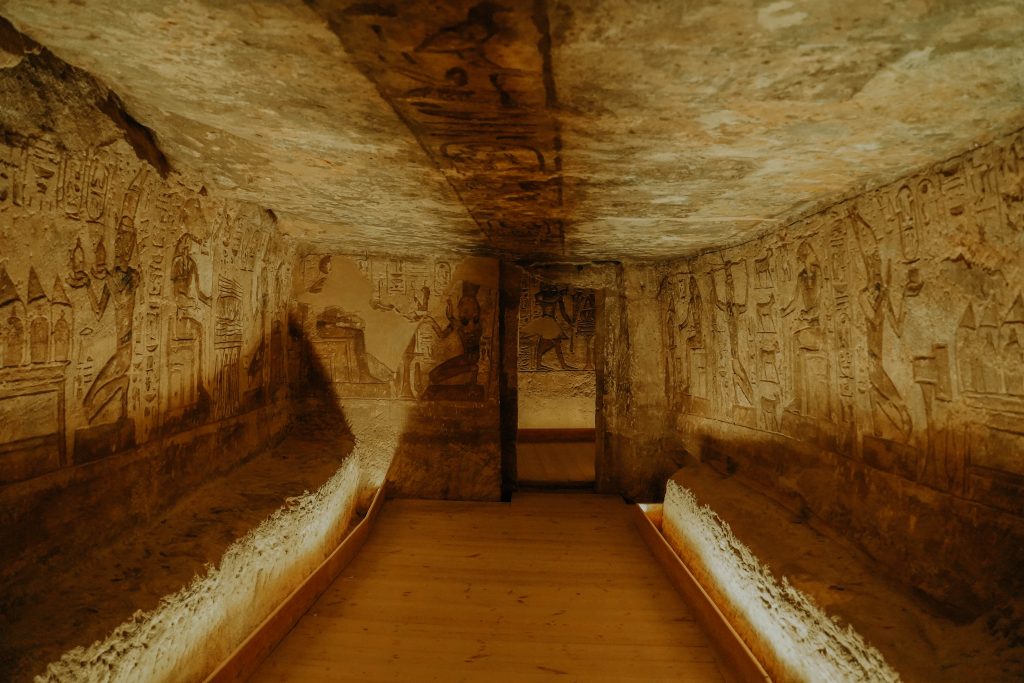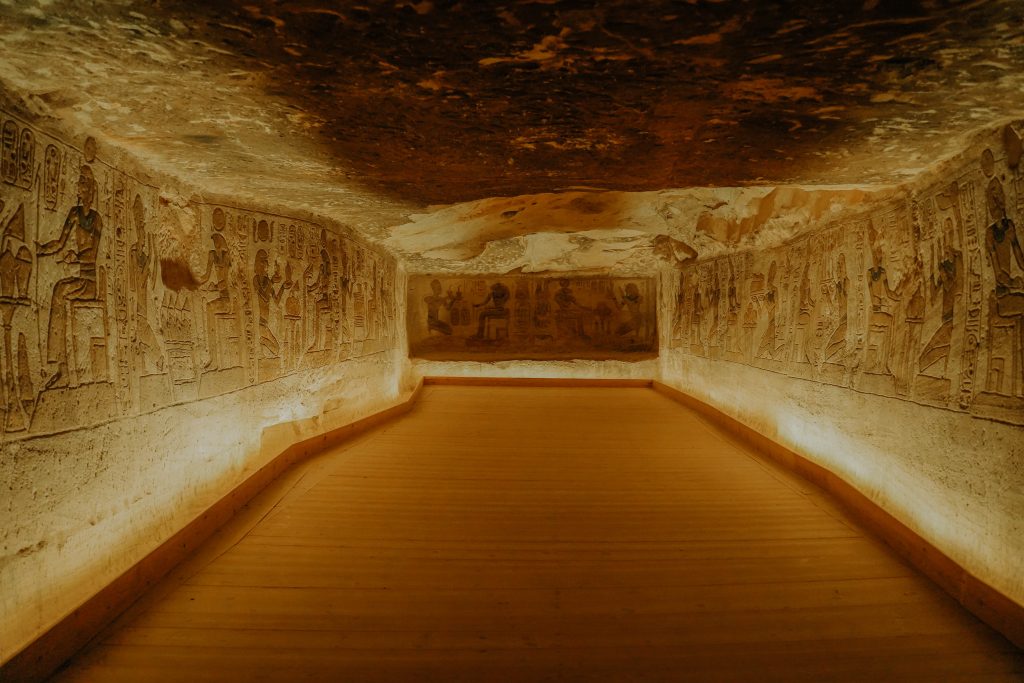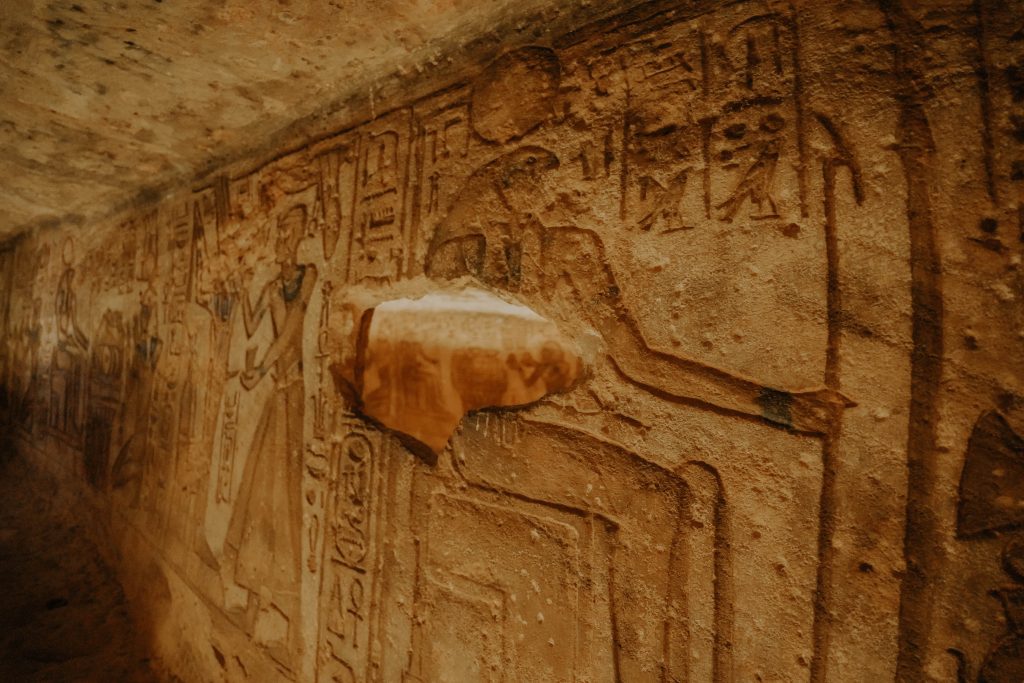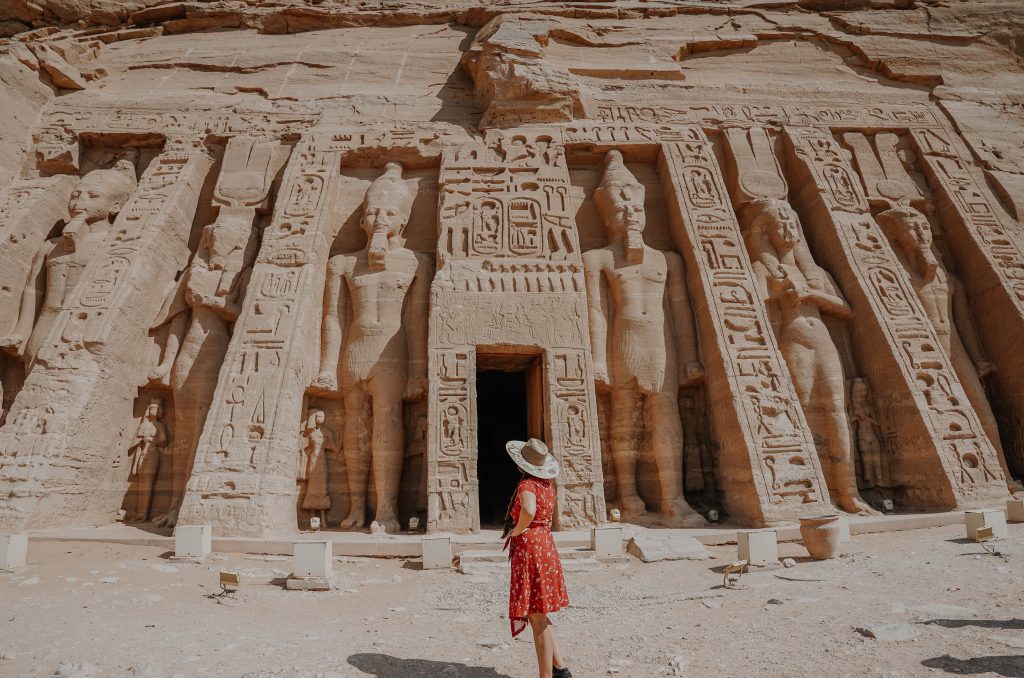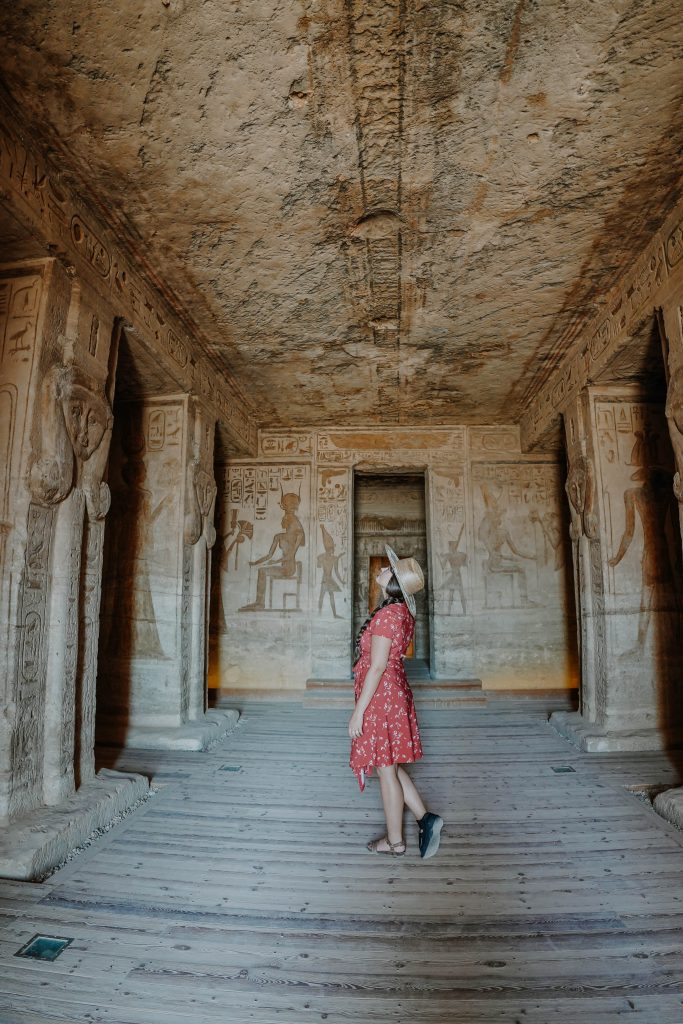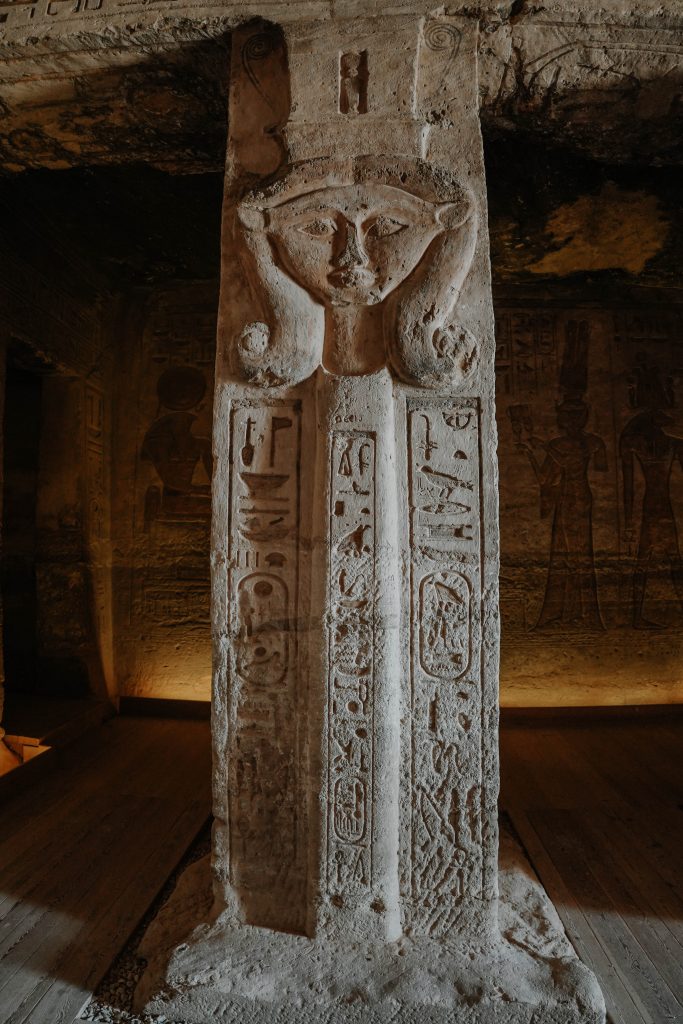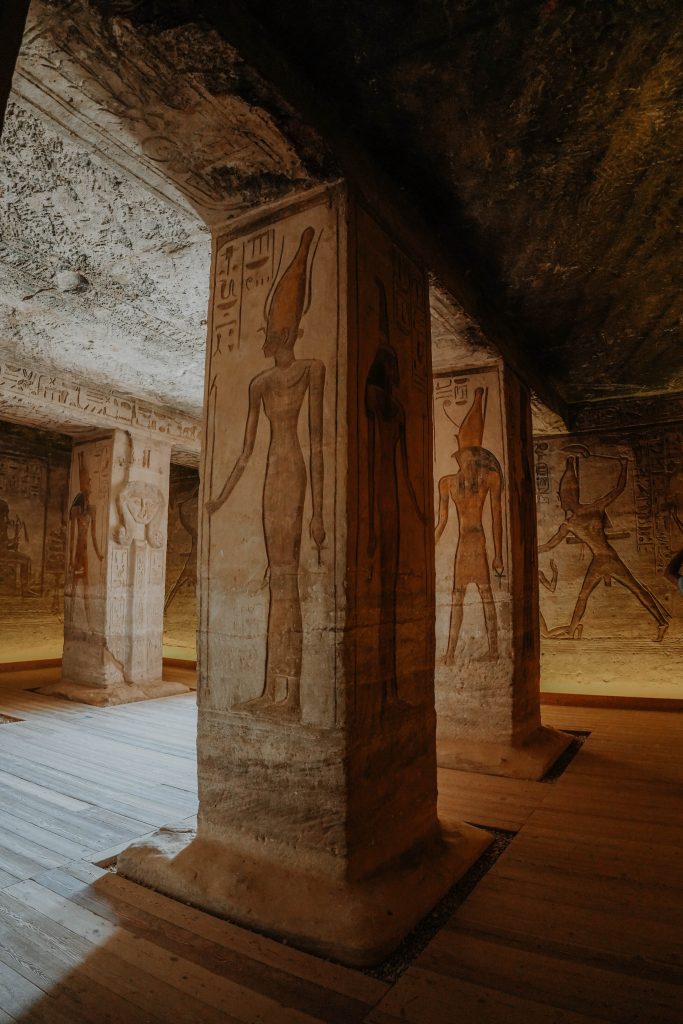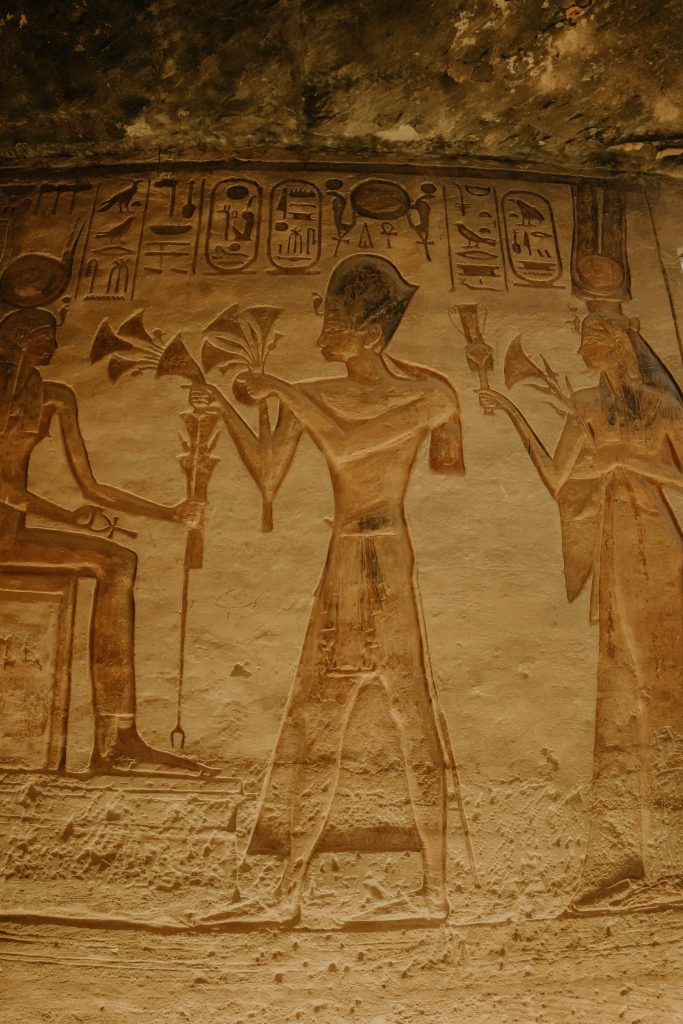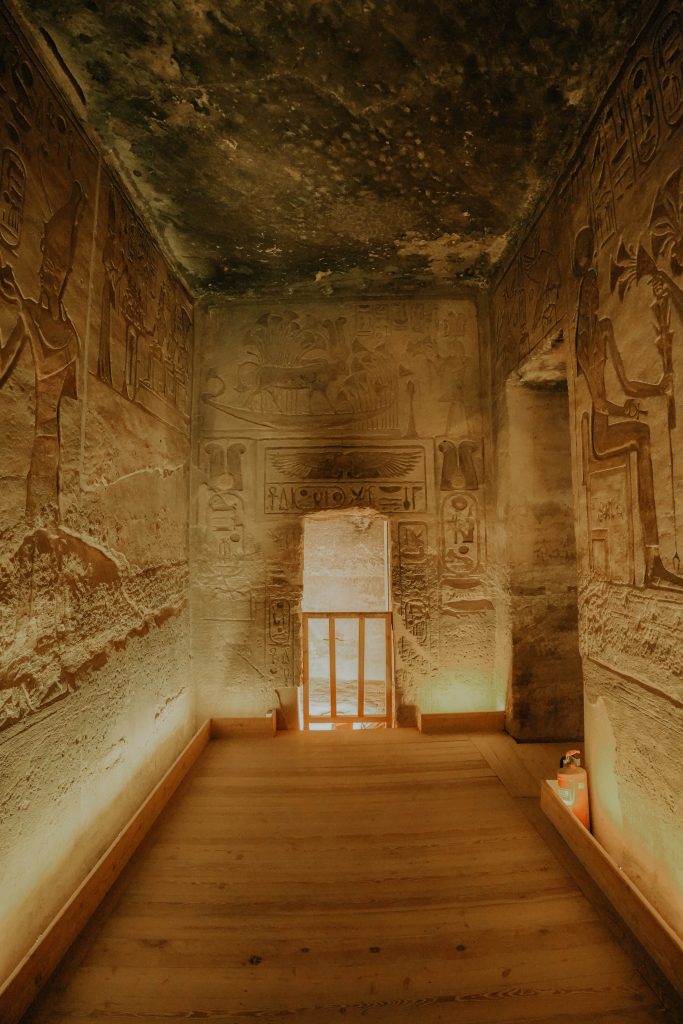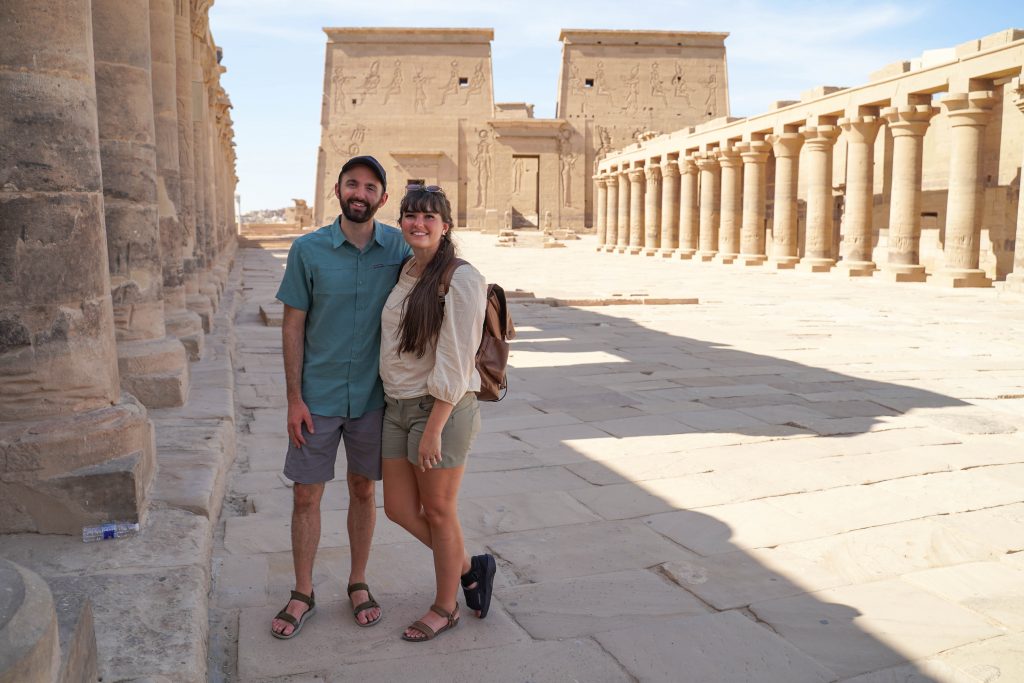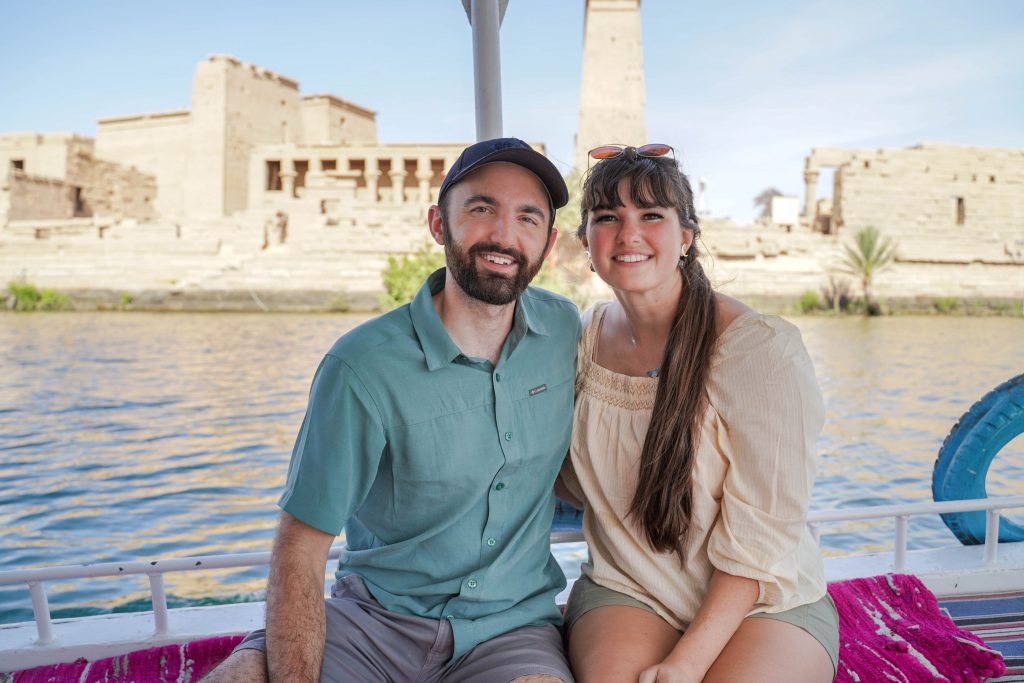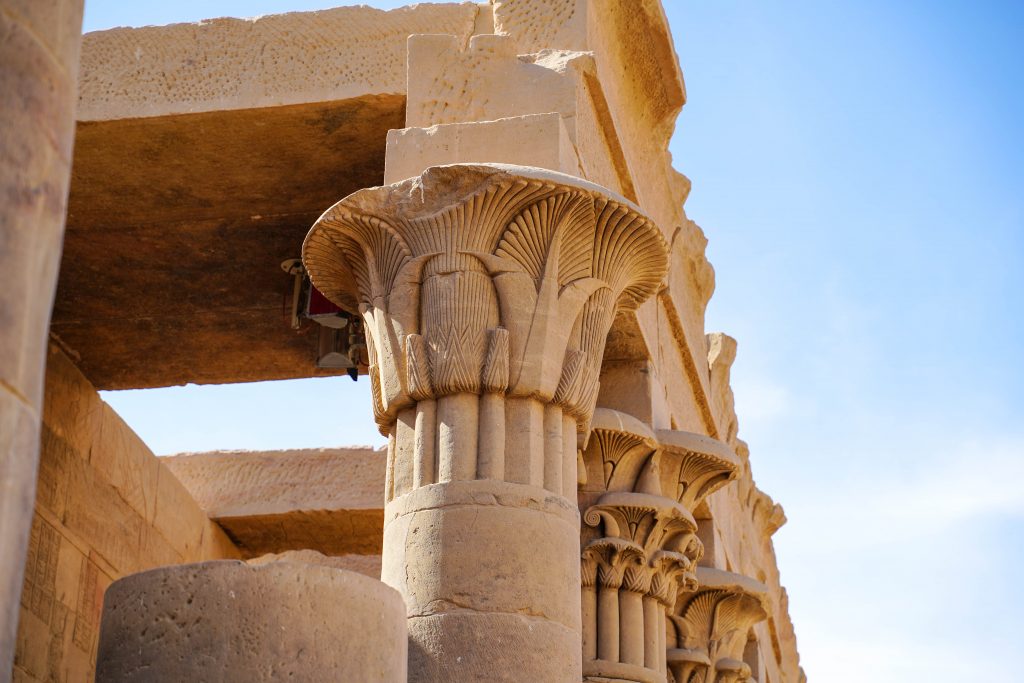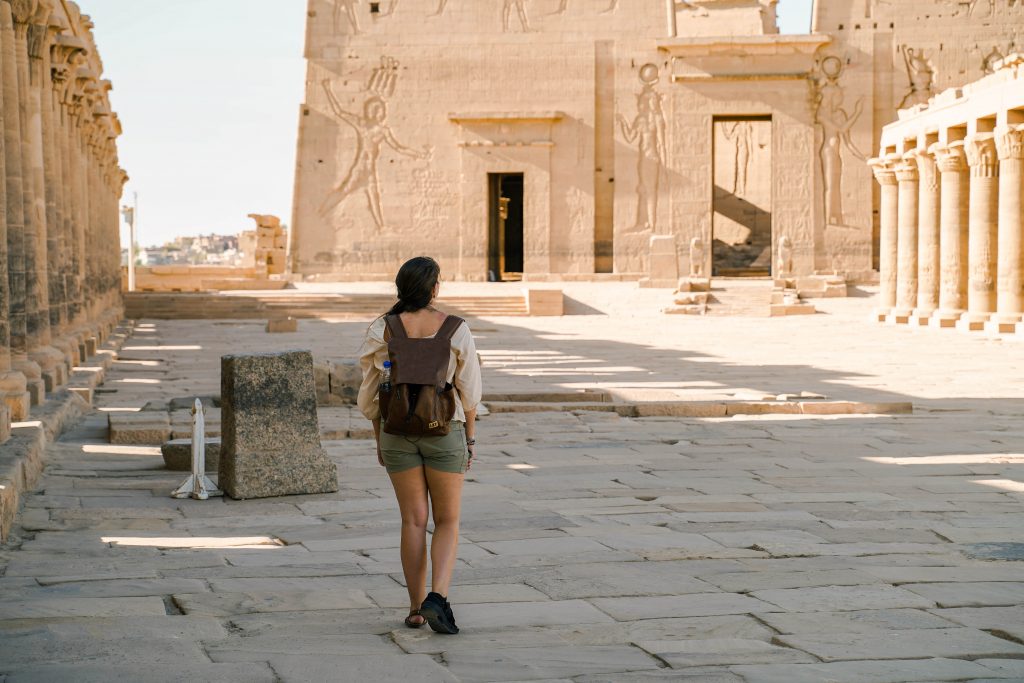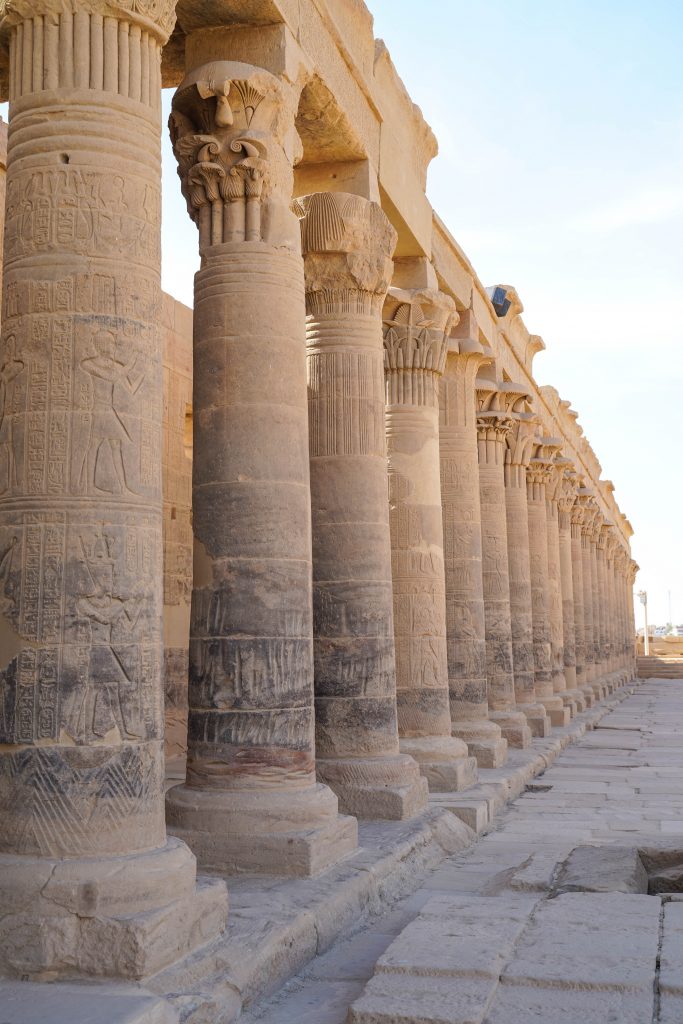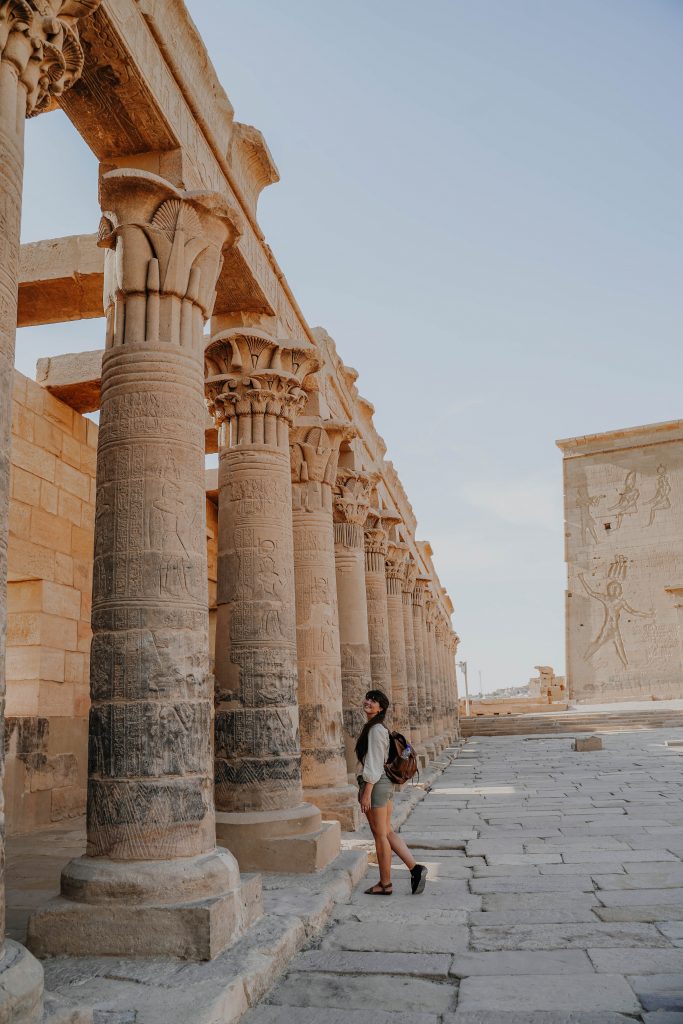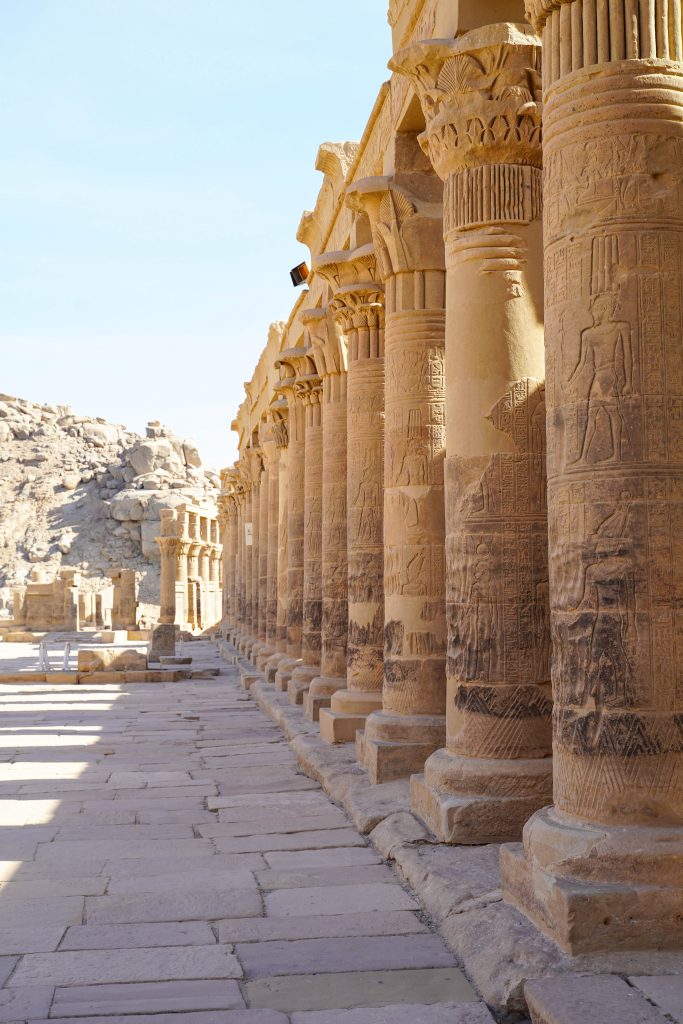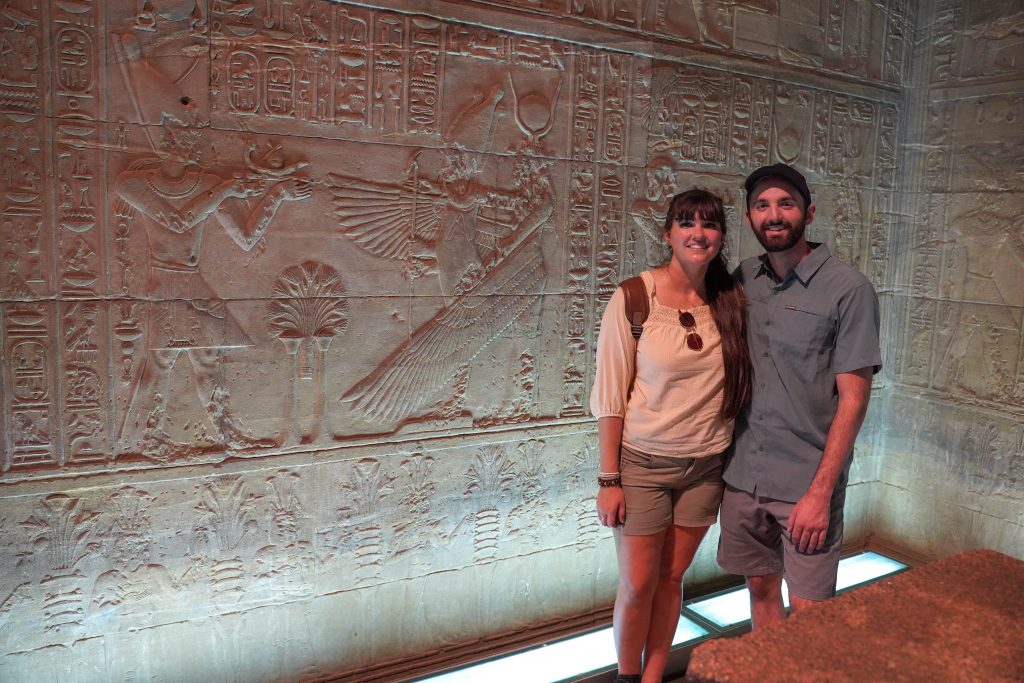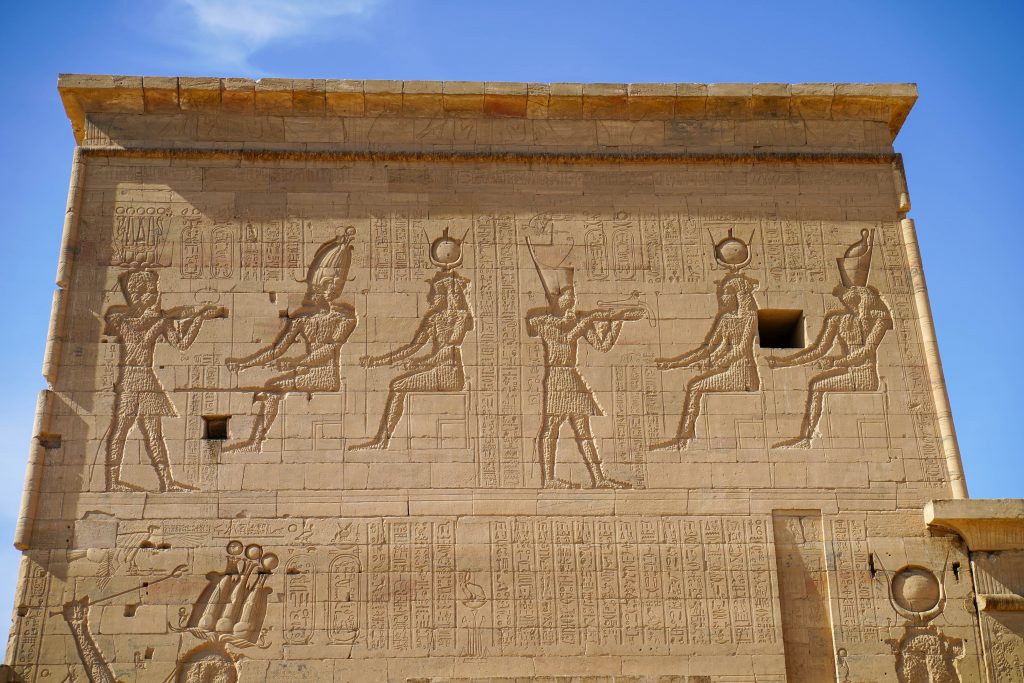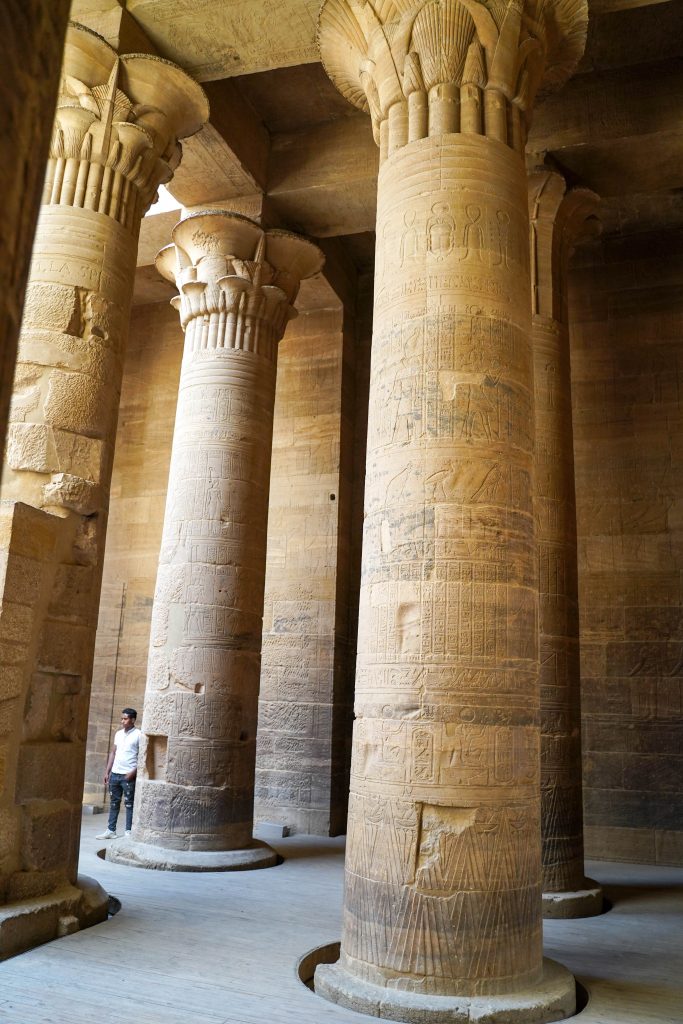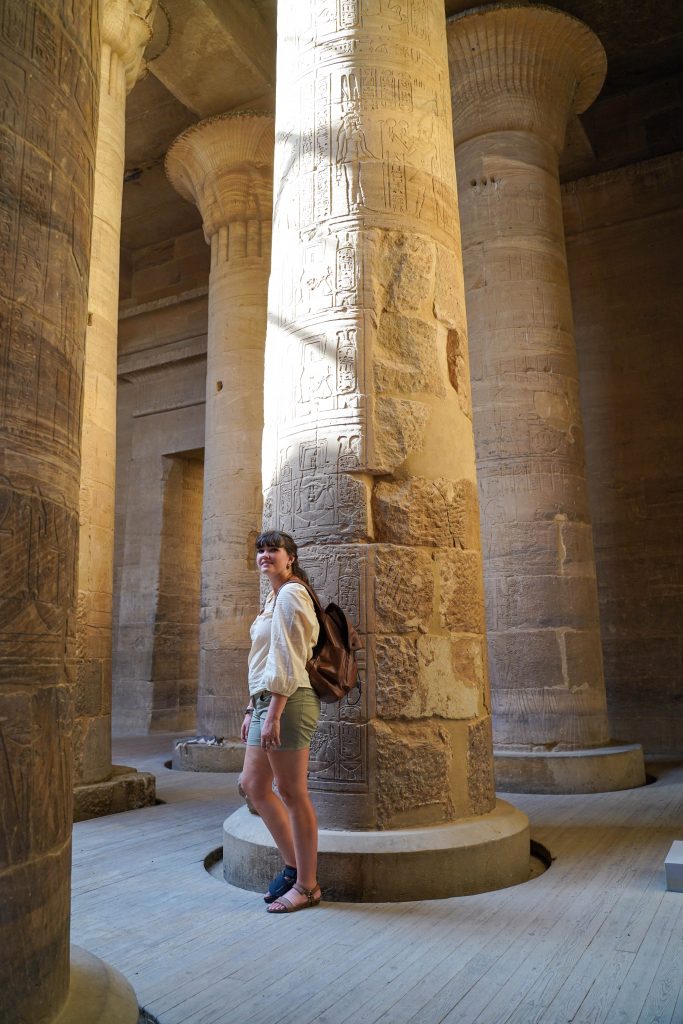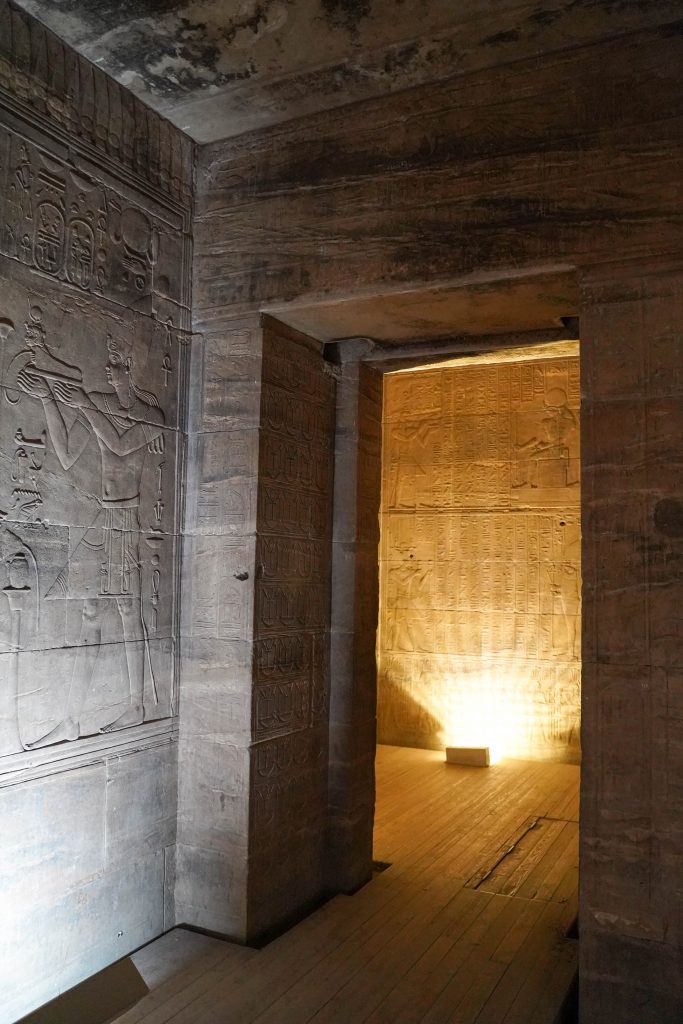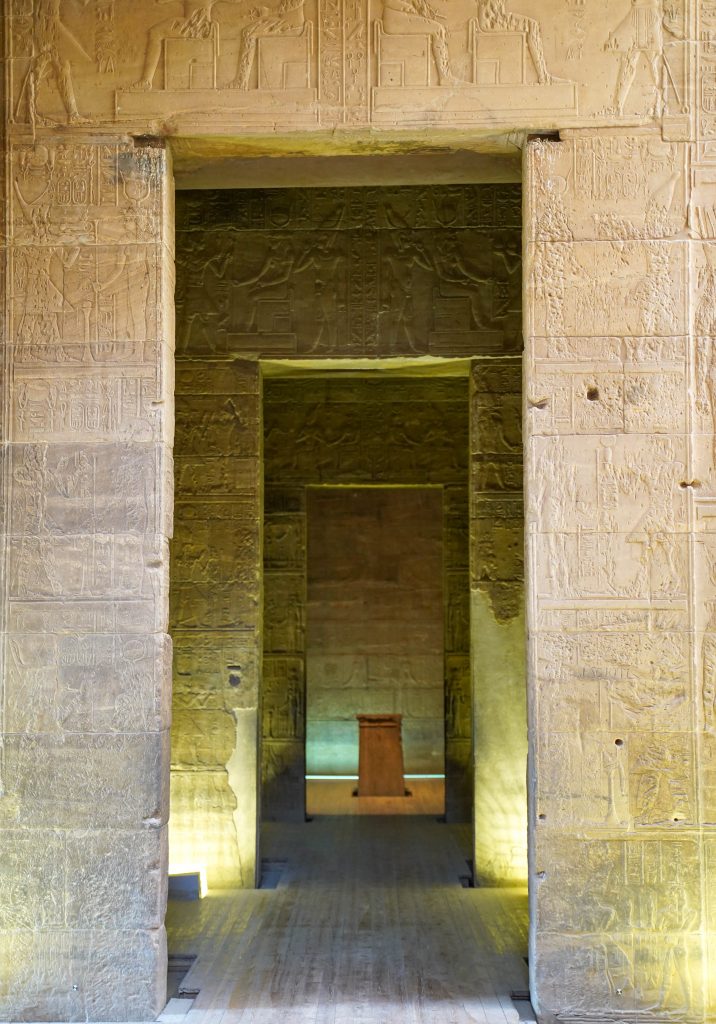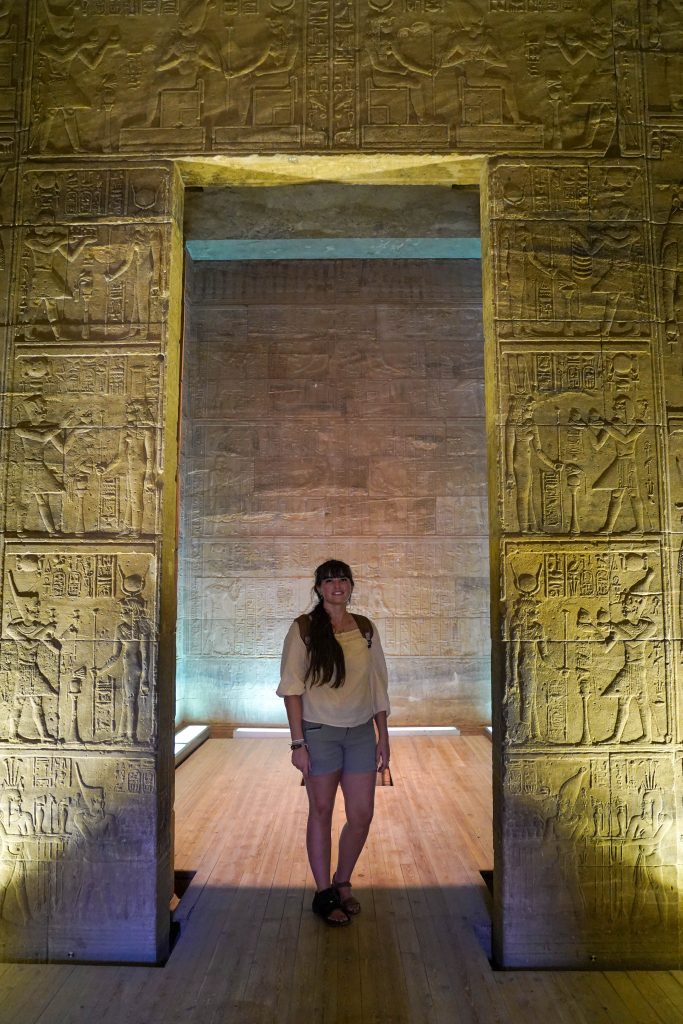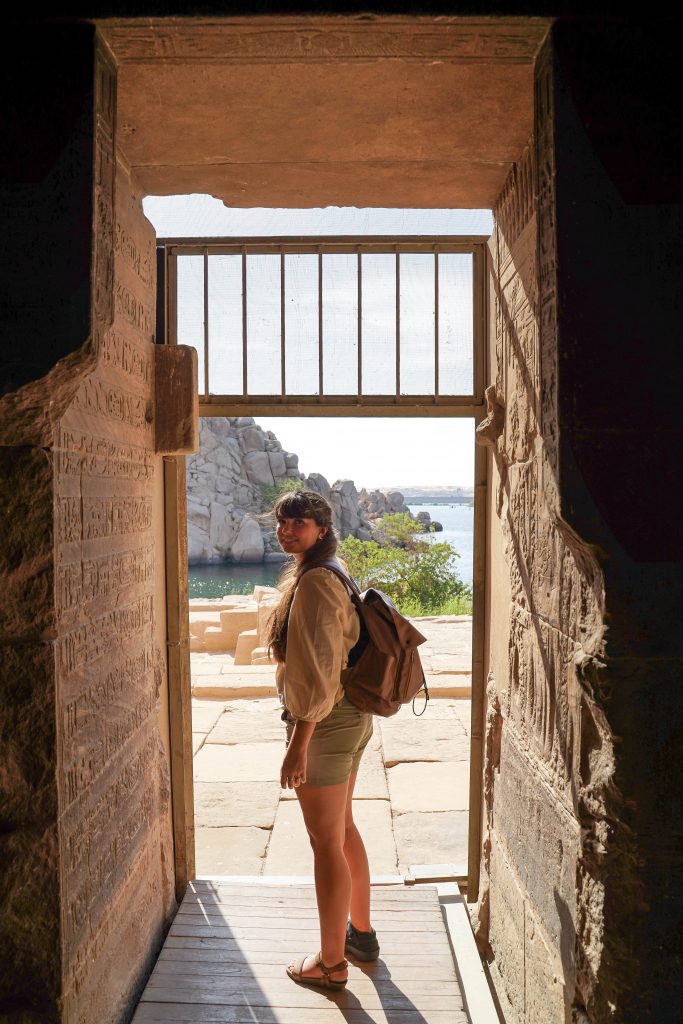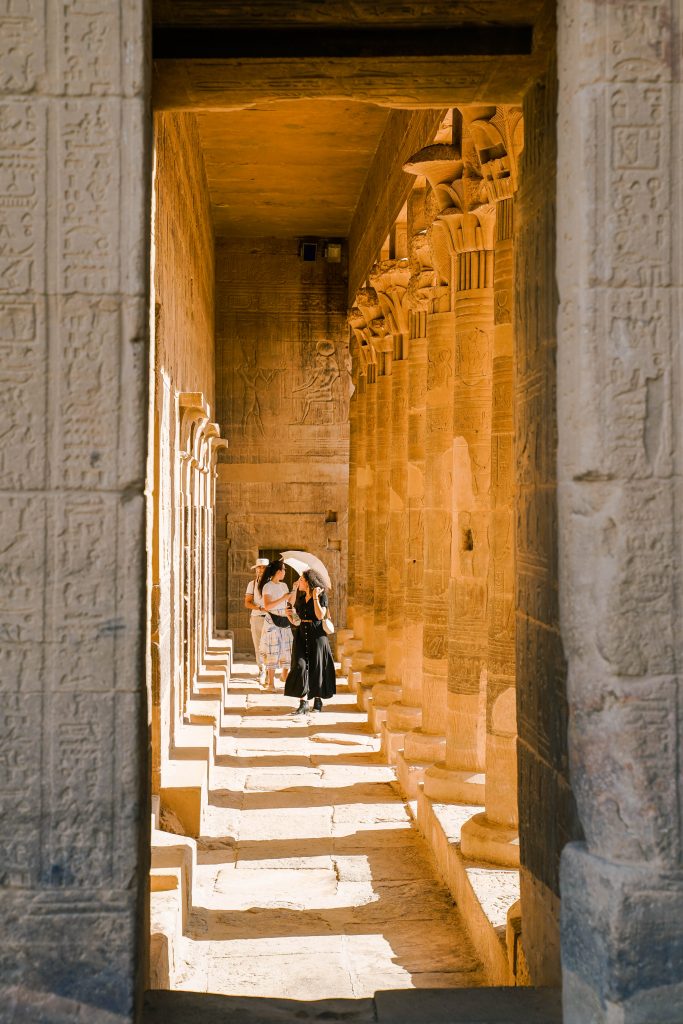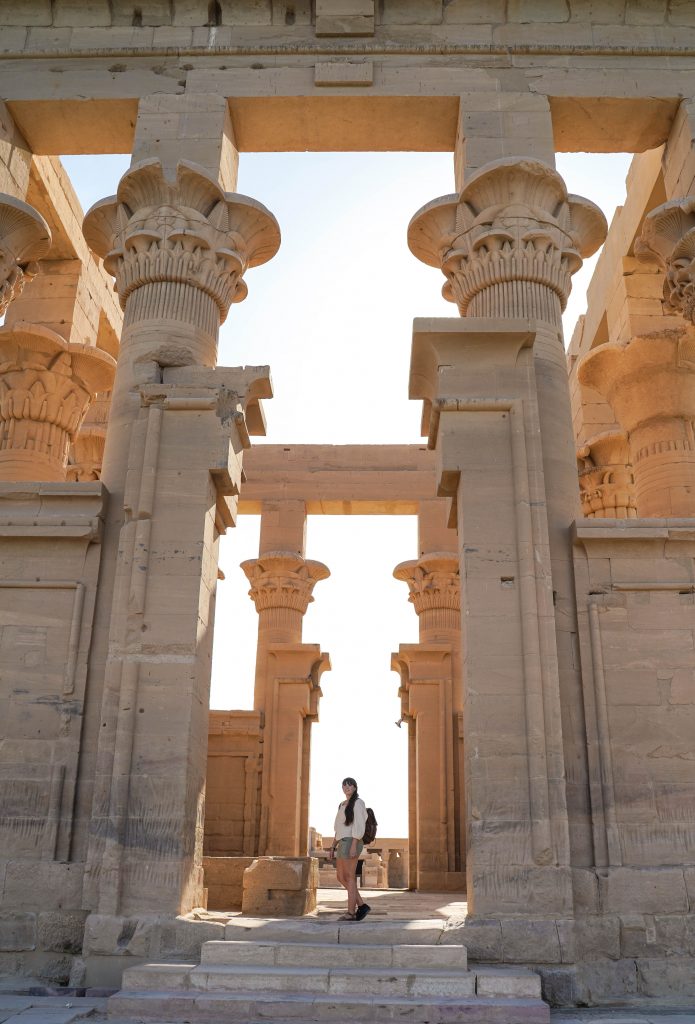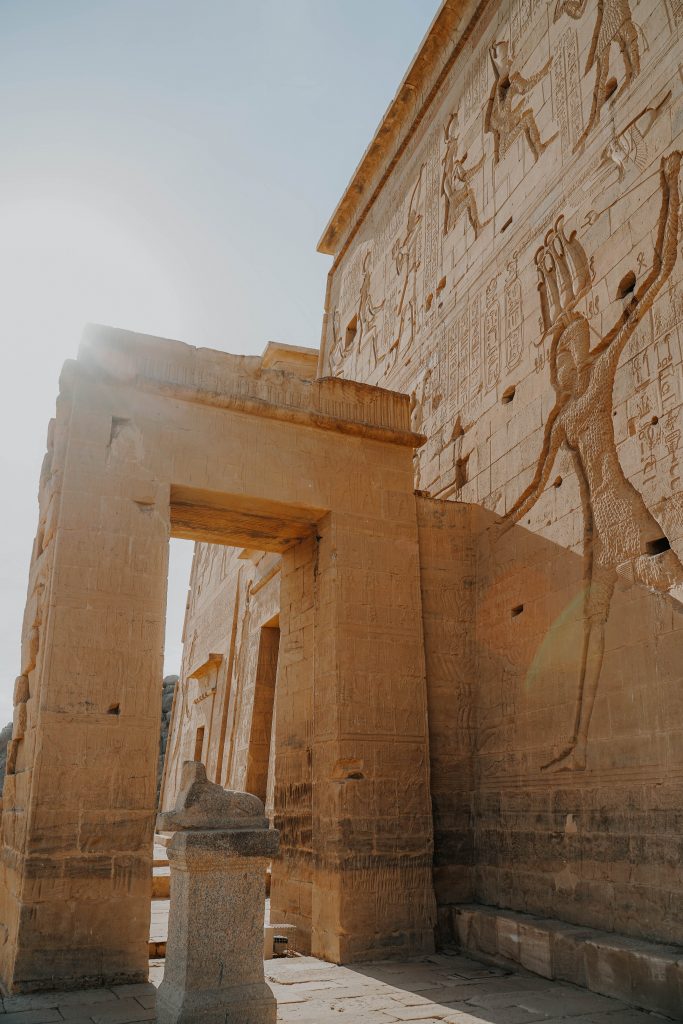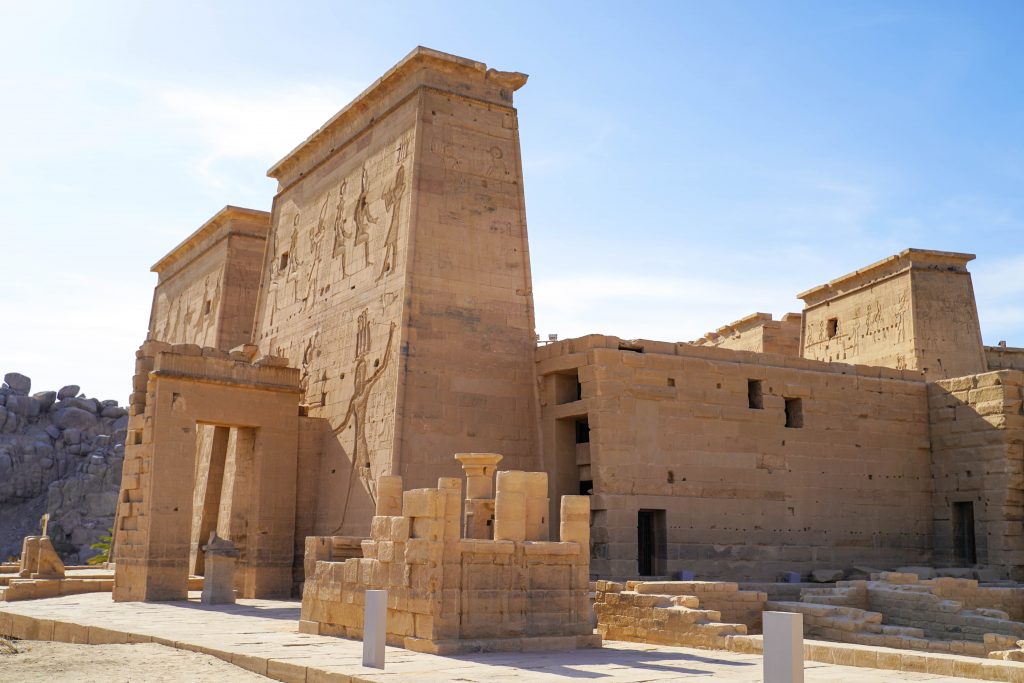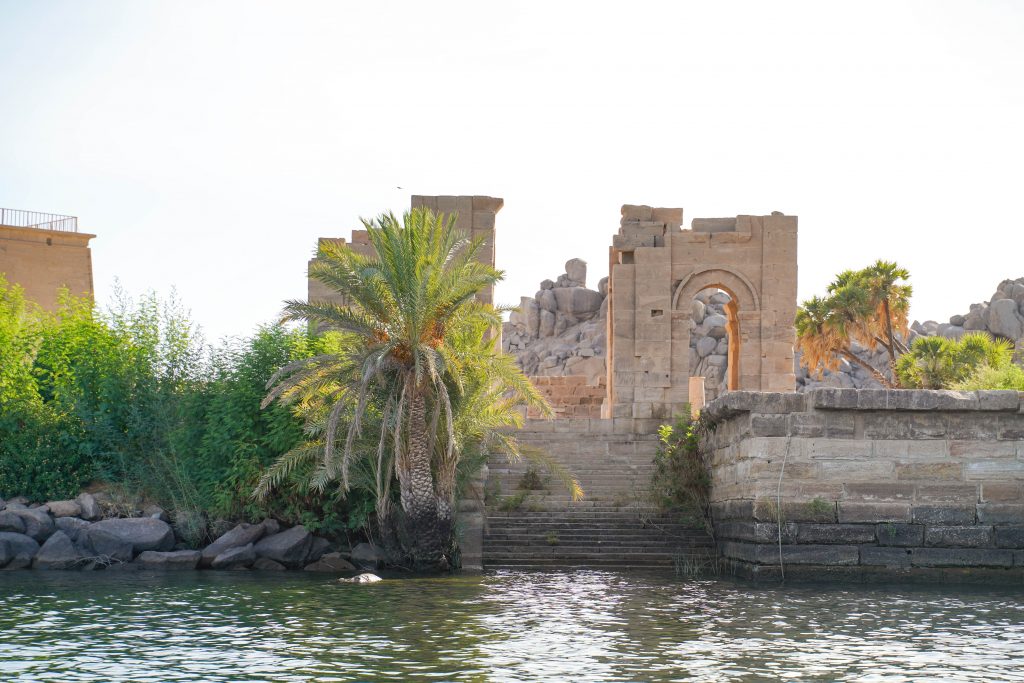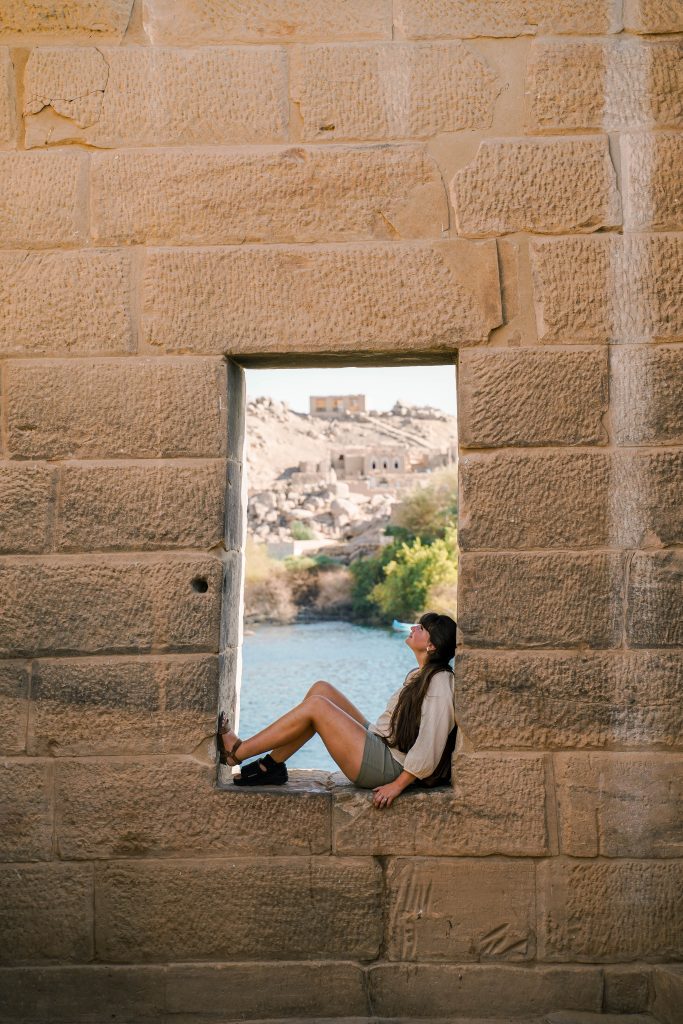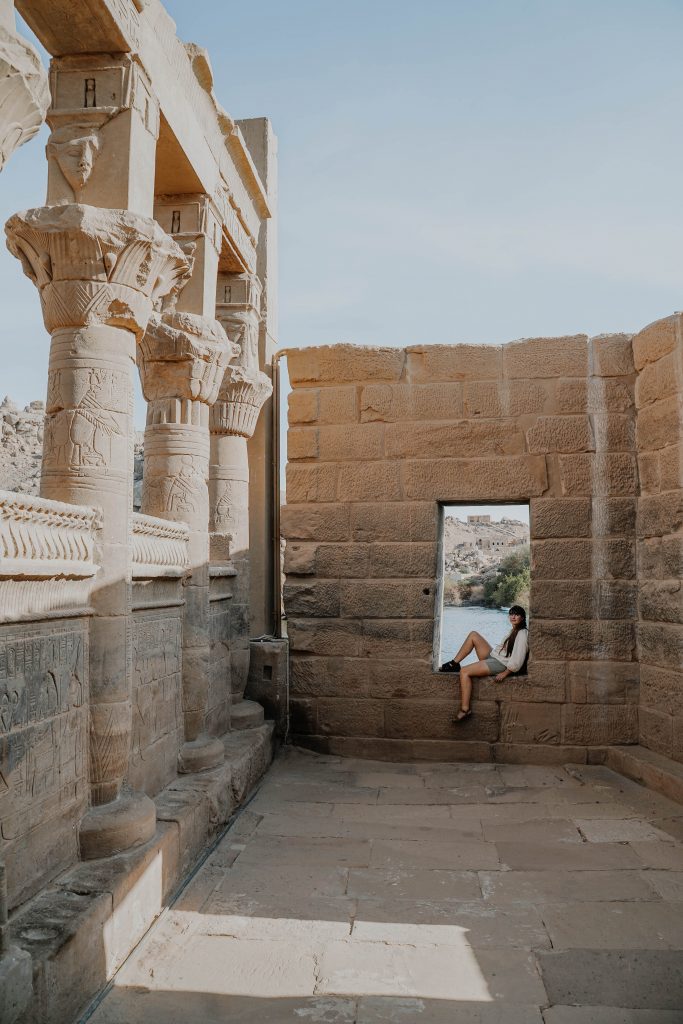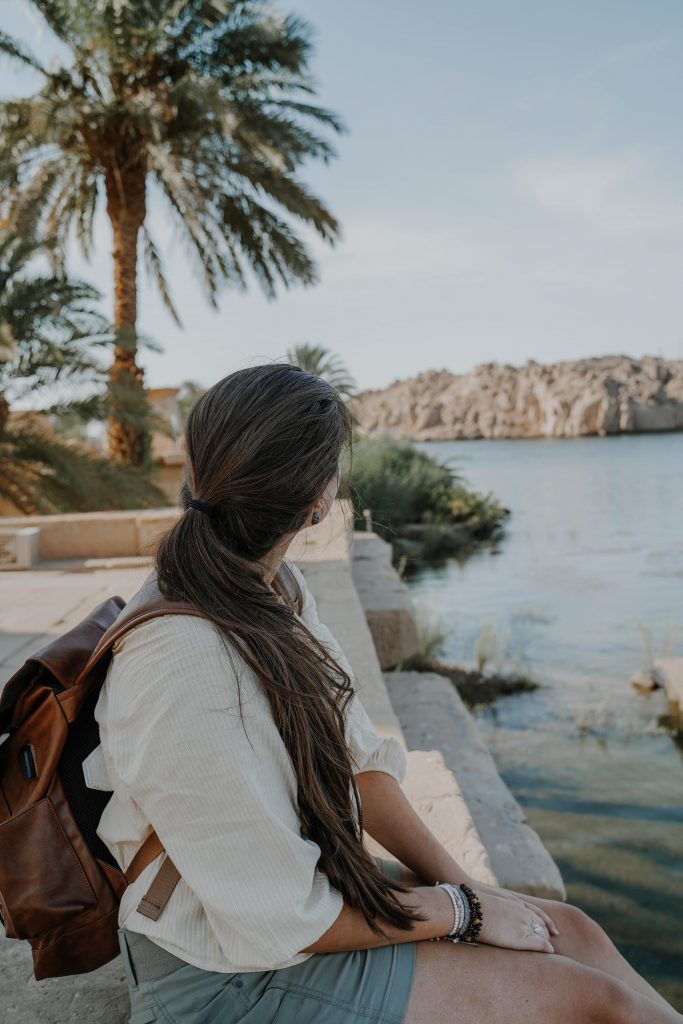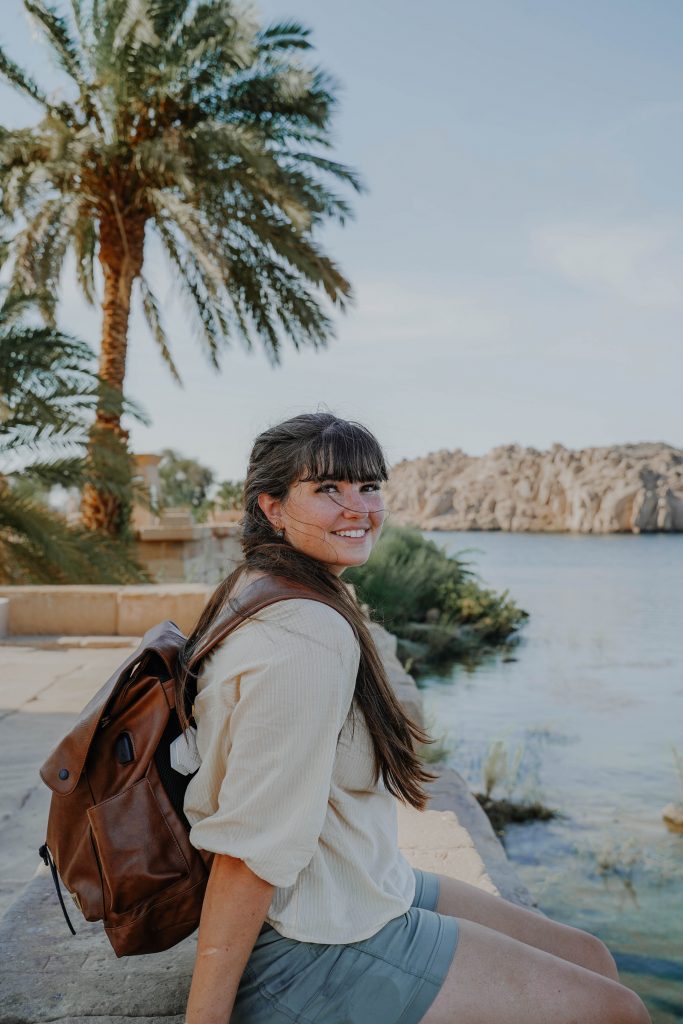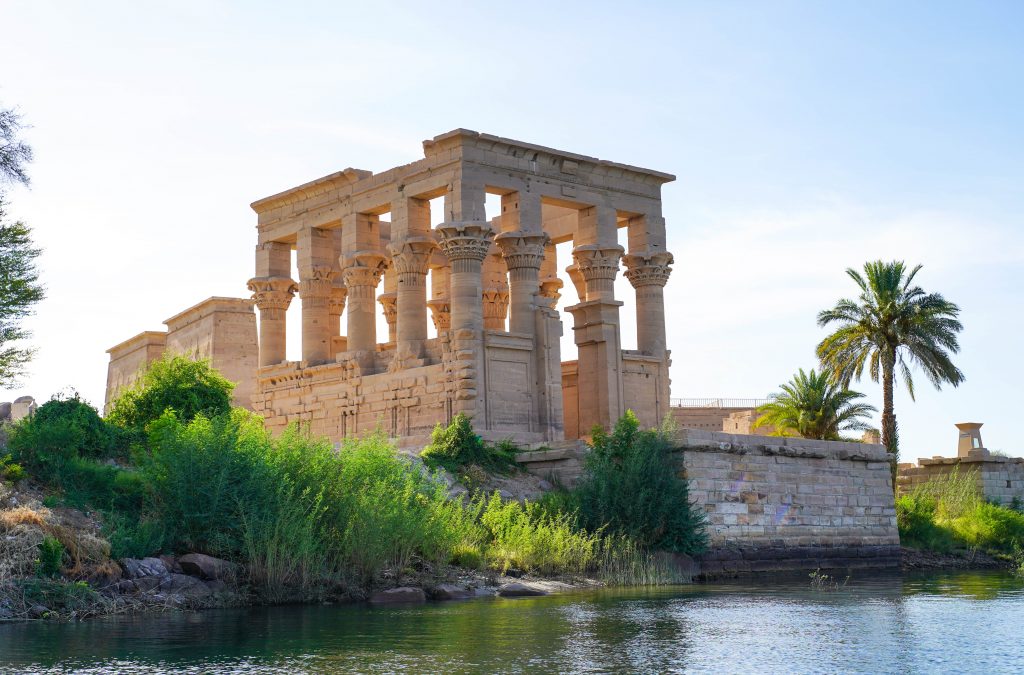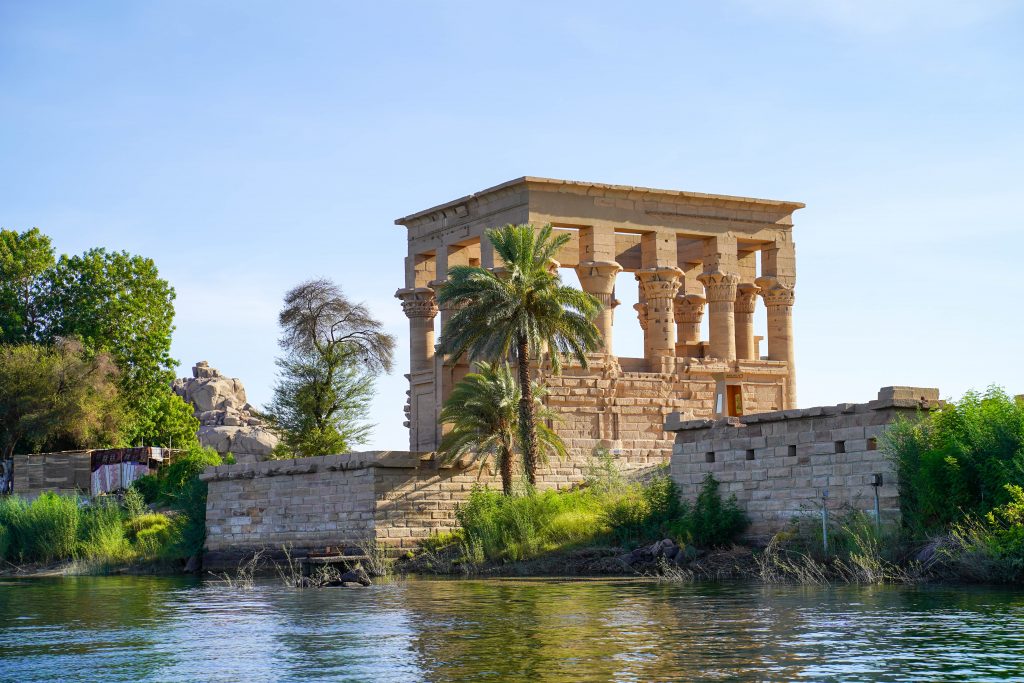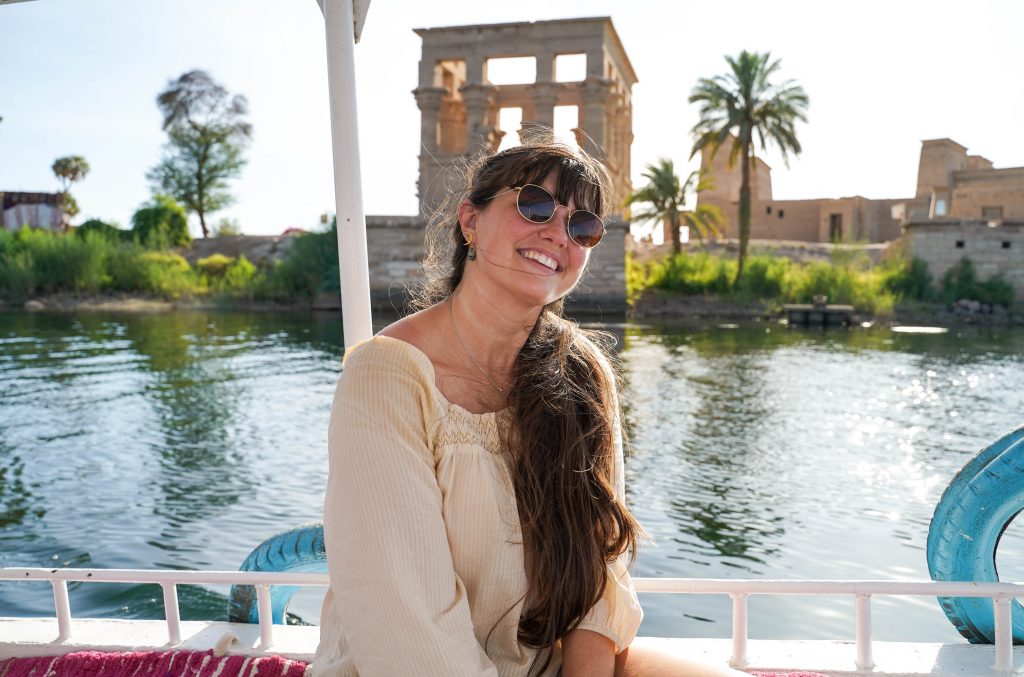Abu Simbel is two incredible rock-cut temples with beautiful inscriptions, multiple rooms, and iconic sitting statues of the pharaoh who “built” them guarding the entrance. While it maybe a bit of a trek to get to, it was pretty unlike anything else we saw on our trip to Egypt.
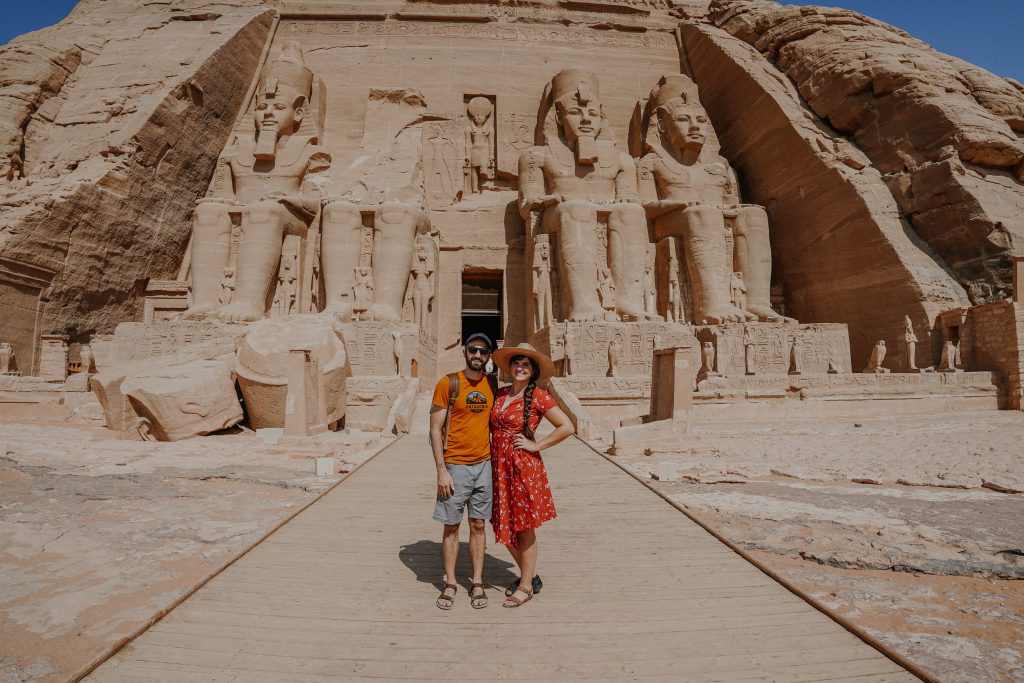
Instead of columns in the vestibule of the temple, there are giant carved statues and long short roofed rooms branching off the sides. The small amount of light let in is reminiscent of adventure movies like the Mummy and the closest comparison to walking into the hillside of a mountain is the Valley of the Kings. (which is usually just one single hallway and not as grand- albeit very beautiful)
Where is Abu Simbel?
Located a lengthy 3.5 hour drive from Aswan, Egypt- Abu Simbel sits just a few miles north of the border with Sudan and right next to Lake Nasser.* Like Philae temple, Abu Simbel would have been lost completely with the construction of the High Dam and filling of Lake Nasser. It now rests near the lake shore about 200 feet (65 m) higher and 650 feet (200m)back from its original position. It is carved into an artificial hillside made just for the temples.
*Abu Simbel does have a small airfield and layovers are possible when flying from Cairo to Aswan or back. This is a pretty costly way of seeing the temples though.
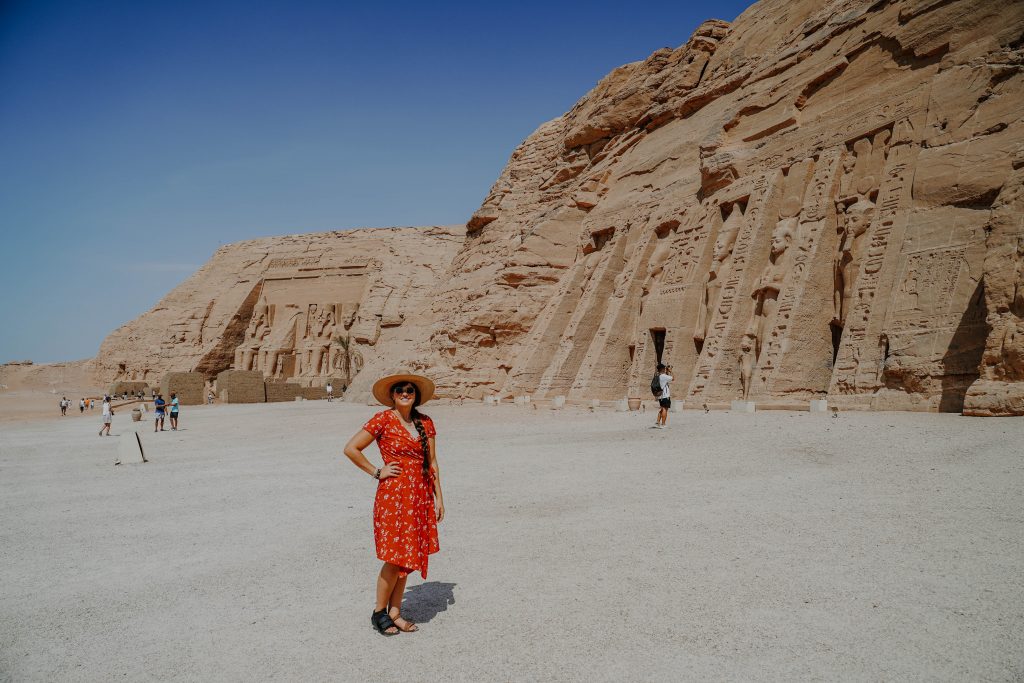
Moving the temples
The salvage of the temples began in 1964 by a skilled team of archeologists, engineers, and very skilled heavy equipment operators. The entire site was carefully cut into large blocks of up to 30 tons (averaging 20 tons), dismantled, lifted, and reassembled in the new location. The hillside that the temple is now built into is a steel dome and the shape/ rooms/ and artwork in the rooms were all placed exactly as they had been before.
We didn’t try as hard to notice seams in the Philae Temple but I will admit we were looking for them at Abu Simbel and didn’t find a single one. They pieced it back together so perfectly, it is really incredible to see and witness in person for the engineering feat alone. There’s even a small visitor center dedicated to what was accomplished in moving the temples and it’s a great spot to check out on your way back to meet your guide.
About Abu Simbel
Abu Simbel has some interesting politics associated with it. The construction was ordered by King Ramesses II (or the great) in 1264 BC in order to cement his reign with the Nubians that lived in southern Egypt. It depicts him as a god, specifically in line with the gods the Nubians worshipped at the time and further sought to unify the northern and southern kingdoms of Egypt. The smaller of the 2 temples is designated for his chief queen- the famous Nefertari who was a chief diplomatic figure at the time in addition to being the chief wife.
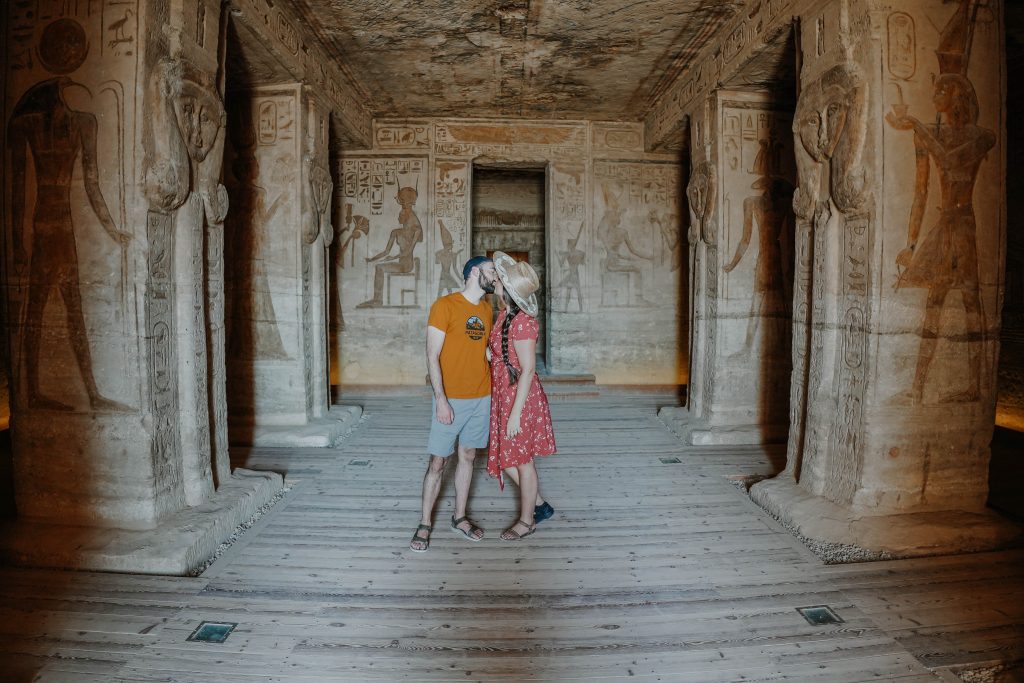
The Great Temple
The four colossal 65 foot (20m) statues are depictions of Ramesses II seated on a throne and wearing the double crown of upper and lower Egypt. The temple is dedicated to the highest gods Amun, Ra-Horakhty, Ptah, and the deified Ramesses himself.
The layout of the temple is triangular and similar to other temples with the largest room at the front which gradually gets smaller as you get to the inner sanctuary. The first room has 8 impressive statues of… you guessed it, King Ramesses II again.
I loved this incredible room called the hypostyle hall – the statues are of the king linking him to the god Osiris (the husband of Isis who we learned about at Philae temple)- he is the god of fertility, agriculture, the afterlife, the dead, and resurrection. The reliefs around this room depict the many successful military campaigns that Ramesses waged against the Hittites (modern day Syria) and the Nubians.
The second pillared hall is smaller and has four pillars decorated with scenes of offerings to the gods- this room includes more depictions of the beautiful queen Nefetari.
The sanctuary
Following this room is one of the most interesting parts of these temple and that is the inner sanctuary. Most other temples had a single altar that would support a cedar wood boat used for offerings to the gods of the temple. This sanctuary however has 4 statues depicting the 4 gods the temple is dedicated to.
The 4 statues are also in alignment with solar activity and on only a couple dates a year, the sunrise will penetrate from the front of the temple to the back to illuminate the 3 statues on the right- King Ramesses II, Amun, and Ra-Horakhty. The god on the far left, Ptah, who is the god of darkness and connected with the realm of the dead, remains in the dark during these solar events.
Apart from the impressive central rooms, there are many rooms branching off the side with incredible reliefs and hieroglyphics depicting information that would be used by the priests of the temple such as rituals, recipes for various balms and salves, and the like.
The smaller temple
The small temple is dedicated to Queen Nefetari and the goddess Hathor. The entrance is flanked by 6 statues (33fet or 10 m high) and depict the king and then the queen by his side. Interestingly this was only the 2nd temple ever built in honor of a queen in Egypt’s history, and the queen was made to be the same height at the king instead of only knee height which was the norm. This definitely puts some perspective on how important Queen Nefetari was in Egypt’s history.
Once inside the temple, there is a hall supported by 6 pillars which are decorated with scenes of the queen playing the sistrum instrument with the gods Horus, Hathor, Isis, and others. The top of the pillars have the face of Hathor (the easiest goddess to recognize as she is usually represented with a human face and cow ears) who is the goddess of music, dance, joy, beauty and love, motherhood, and also the sky consort (wife) for both Horus (son of Isis and Osiris if you remember) and the sun god Ra.
The majority of this temple is decorated with depictions of sacred offerings from the king and queen to the various gods and the inner sanctum/ sanctuary is the more standard altar like other temples.
It’s an impressive temple, but not really as mind blowing as the greater temple.
Our experience at Abu Simbel and why it should be on your list
Both facades are incredibly iconic and combined with the towering statues and art work within the tombs, these temples should definitely be on your list to visit. We had a very early morning start for our trip, leaving our hotel in Aswan at 4:30 AM to make the 3.5 hour drive out there. The drive really doesn’t showcase anything but desert in all directions so we mostly just relaxed and picked at our breakfast boxes we got from the hotel.
Once we arrived, our guide told us about what we would see inside and walked to the front of the great temple with us but then left us to explore both temples on our own for an hour or so. (Guides aren’t allowed in the temples) We wandered around trying to identify the art depictions that our guide told us about and the general significance. It was REALLY hot and this is maybe one of the longer walks around so once we finished looking at the temples, we didn’t waste much time in walking back to meet our guide.
These temples are immensely popular and can get really crowded during peak tourist season but one of the perks of going in summer is the lack of crowds and it really wasn’t that busy. We took a couple minutes to view the small museum on how they moved the temples and use the bathroom on our way back to the van and were on the road heading to Aswan by 10AM.
